
Can a Bite From a Brazilian Wandering Spider Cause a Four-Hour Erection?
In many cases, the erection is merely an early warning before the complete shutdown of multiple organ systems., alex kasprak, published aug. 16, 2023.

About this rating
On Aug. 14, 2023, the account First Doctor posted what it asserted to be an "exclusive" finding on the social media platform X, formerly known as Twitter:
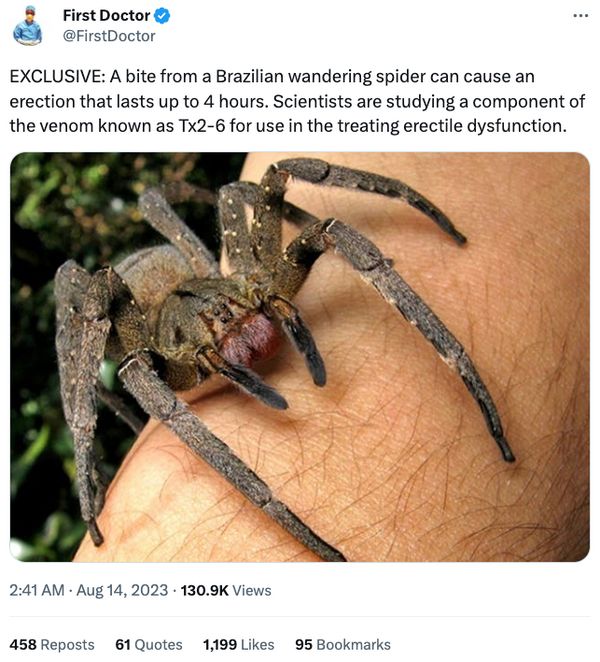
While far from an exclusive — or even a remotely new — finding, the two claims in the tweet were factual. A bite from Phoneutria nigriventer , commonly known as the Brazilian wandering spider, can indeed result in a long-lasting and painful erection, a condition known as priapism when it lasts more than four hours .
While the toxicity and high risk of death posed by the chemical thought to be responsible for the erections makes its use as a potential erectile dysfunction (ED) therapy challenging, if not literally impossible , it has been used to develop similar chemicals that may have therapeutic potential.
Phoneutria nigriventer 's erection-causing effects have been known to science since the 1970s. The 1971 book "Venemous Animals and Their Venom" described priapistic effects of this spider's bite on mice and dogs. The authors also included anecdotal reports from humans who had been bitten:
A pattern which resembles that of dog envenomation is also noticed in humans bitten by Phoneutria nigriventer: local unbearable pain, salivation, visual disturbances, sweating, prostration, priapism, and death.
Research published in 2008 identified the chemical within the venom likely responsible for the erections — a peptide now named PnTx2-6. "[Pn]Tx2-6 enhanced erectile function in [...] rats, via the [Nitrous Oxide] NO pathway," the study reported. "Our studies suggest that [Pn]Tx2-6 could be important for development of new pharmacological agents for treatment of erectile dysfunction."
The interest in this toxin as a treatment for ED stems, in part, because it operates in a completely different way than common ED treatments like Viagra, as reported in 2011 by NBC News:
Viagra, Levitra and other ED drugs on the market work by inhibiting an enzyme called PDE5. To get an erection, a man's body must release nitric oxide, which relaxes the smooth muscle around the arteries of the penis, allowing for his blood vessels to dilate. The nitric oxide is a first step in a series of chemical reactions that allow this muscle relaxation to take place. One step in the series is cGMP, a signaling molecule that acts to keep the muscles relaxed. PDE5 degrades cGMP. That's a good thing for ensuring that erections don't last forever, but too much PDE5 can mean an erection doesn't happen at all. By blocking the enzyme, PDE5 inhibitors solve the problem. The spider toxin works differently. Instead of affecting PDE5, the compound seems to trigger nitric oxide release, acting directly to relax the smooth muscles. Because about 30 percent of patients don't respond to PDE5 inhibitors, the toxin could provide an alternative to ED treatments currently on the market, [Study author Kenia] Nunes said."
In 2022, the same research group responsible for identifying PnTx2-6 published a paper arguing, in part, that due to the extreme pain and high toxicity of the chemical, its "therapeutic use is impossible," but that it is "an excellent pharmacological tool for studying erectile function." That study synthesized a new peptide, PnPP-19, based on the toxic original.
Based on studies performed on laboratory mice, PnPP-19 appears to have the potential to cause erections without the pain or toxicity of the spider venom:
This synthetic peptide also potentiates erectile function via NO/cGMP, but it [...] displays nontoxic properties in animals even at high doses. PnPP-19 effectively potentiates erectile function not only after subcutaneous or intravenous administration but also following topical application.
The assertions in First Doctor's post were factual because the priapism caused by Phoneutria nigriventer's bites have been well-documented and well-studied for decades and because the active ingredients in that venom have been used to investigate new ED therapies. As such, we rate the claim as "True."
Bücherl, Wolfgang, and Eleanor E. Buckley. Venomous Animals and Their Venoms: Venomous Invertebrates. Elsevier, 2013.
Nunes, K. P., et al. "Tx2-6 Toxin of the Phoneutria Nigriventer Spider Potentiates Rat Erectile Function." Toxicon : Official Journal of the International Society on Toxinology, vol. 51, no. 7, June 2008, pp. 1197–206. PubMed Central, https://doi.org/10.1016/j.toxicon.2008.02.010.
Silberman, Michael, et al. "Priapism." StatPearls, StatPearls Publishing, 2023. PubMed, http://www.ncbi.nlm.nih.gov/books/NBK459178/.
Silva, Carolina Nunes da, et al. "From the PnTx2-6 Toxin to the PnPP-19 Engineered Peptide: Therapeutic Potential in Erectile Dysfunction, Nociception, and Glaucoma." Frontiers in Molecular Biosciences, vol. 9, 2022. Frontiers, https://www.frontiersin.org/articles/10.3389/fmolb.2022.831823.
"Spider Venom Shows Promise for Treating Erectile Dysfunction." NBC News, 7 Sept. 2012, http://www.nbcnews.com/health/health-news/spider-venom-shows-promise-treating-erectile-dysfunction-flna1B5794477.
By Alex Kasprak
Alex Kasprak is an investigative journalist and science writer reporting on scientific misinformation, online fraud, and financial crime.
Article Tags
This article is free to read if you register or sign in.
Simply register at no cost.
Questions or problems? Email [email protected] or call 0711 046 000 .
FACT CHECKER
Misleading: bite from brazilian spider causes four-hour erection, high or low blood pressure, fast or a slow heartbeat, nausea, abdominal cramping among signs..
• But Urologist Dr. Peter Mungai said penile erection involves neuron stimulation and production of hormones which has nothing to do with a spider bite.
• In addition to intense pain and possible medical complications, the bite of a Brazilian wandering spider can deliver a long, painful erection to human males because the venom boosts nitric oxide, a chemical that increases blood flow.
A viral photo claiming that a bite from a Brazilian spider causes an erection lasting up to four hours is misleading.
The photo, widely shared in WhatsApp groups, encouraged those with an erection disorder to try the spider to up their performance.
This came up following an online publication claiming that the species contains a possible breakthrough for erectile dysfunction.
“Most people who find a spider in their bedroom quickly try to get rid of it. But new research shows that one arachnid might actually be best kept by your bedside. A single bite from the Brazilian wandering spider has been shown to have side effects including a four-hour-long erection,” read part of the article.
But Urologist Dr. Peter Mungai said an erection occurs when a man becomes sexually aroused allowing hormones, muscles, nerves, and blood vessels to work together.
Mungai said penile erection involves neuron stimulation and production of hormones which has nothing to do with a spider bite.
“This is just a good joke because a spider cannot produce the hormones or neurons needed to stimulate a penile erection,” he said.
“If it is true that such information is doing rounds then it could be by some sadists who do not understand the mechanism of erection,” he added.
The neurons in these hypothalamic nuclei contain peptidergic neurotransmitters, including oxytocin and vasopressin, which may be involved in penile erection.
Several brain stem and medullary centres are also involved in sexual function.
For an erection to occur, nerve signals sent from the brain to the penis stimulate muscles to relax in turn, allowing blood to flow to the tissue in the penis.
Once the blood fills the penis and an erection is achieved, the blood vessels to the penis close off so that the erection is maintained.
Following sexual arousal, the blood vessels to the penis open up again, allowing the blood to leave.
However several studies here indicate that the Brazilian wandering spiders' venom is a complex cocktail of toxins, proteins and peptides which affects ion channels and chemical receptors in victims' neuromuscular systems.
The wandering spiders, also called armed spiders or banana spiders, belong to the genus Phoneutria, which means "murderess" in Greek. And it's no wonder why — it's one of the most venomous spiders on Earth.
After a human is bitten by one of these spiders, he or she may experience initial symptoms such as severe burning pain at the site of the bite, sweating and goosebumps.
Within 30 minutes, symptoms become systemic and include high or low blood pressure, fast or a slow heartbeat, nausea, abdominal cramping, hypothermia, vertigo, blurred vision, convulsions and excessive sweating associated with shock.
In addition to intense pain and possible medical complications, the bite of a Brazilian wandering spider can deliver a long, painful erection to human males because the venom boosts nitric oxide, a chemical that increases blood flow.
People who are bitten by a Brazilian wandering spider should seek medical attention immediately.
Several studies are looking at incorporating the venom into drugs for erectile dysfunction.
However, these bites are rare, and envenomations are usually mild.
The Star’s fact check concludes that while it is true a bite from this spider may cause an erection, it is a painful erection which is a disorder due to the venom.
The information is thus misleading.
Most Popular
Msinihurumie mimi sitishwi cs linturi says on ouster bid, prince harry to return to uk for invictus games anniversary, garissa boat owners hike fare by 200% as floods wreak havoc, atwoli: sakaja is my son, it hurts me when he's attacked, release children for school early - cs murkomen, latest videos, several feared dead as lorry carrying sand, people swept by floods, ruto, rachel attend 60th tanzania, zanzibar union anniversary, sign up for the free star email newsletter and receive the latest kenya news daily..

Brazilian Wandering Spider Bite: Is It Poisonous? What You Need to Know
The Brazilian wandering spider, known scientifically as Phoneutria, is a genus of spiders native to South and Central America.
They have garnered attention for their venomous bite, which can cause various symptoms and has the potential to be fatal.
This article will delve into the nature of the Brazilian wandering spider’s bite and its potential effects on humans.
Brazilian wandering spiders are notorious for having one of the most venomous bites among spiders in the world.

The severity of a bite’s effects is dependent on the amount of venom injected, and in some instances, the bite might not be as harmful as anticipated.
However, it is essential to be aware of the possible symptoms and seek immediate medical attention if bitten.
Some symptoms of a Brazilian wandering spider bite may include pain at the bite site, difficulty breathing, blurred vision, and sweating.
In severe cases, the bite can also cause high blood pressure, vomiting, and even death.
Prompt treatment can help mitigate the potential harm caused by these venomous bites and prevent long-lasting health consequences.
Brazilian Wandering Spider: Overview
The Brazilian wandering spider , also known as banana spiders , can be found primarily in South America. They prefer:
- Tropical forests
- Subtropical areas
- Human settlements
Physical Characteristics
Brazilian wandering spiders have the following features:
- Size: Up to 2 inches (5 cm) in body length
- Leg span: Can reach up to 6 inches (15 cm)
- Hairy: Present on their legs and abdomen
- Color: Varies from brown to black, with some species showcasing red or orange patterns
Phoneutria nigriventer is one species within this group.

Source: Pavel Kirillov from St.Petersburg, Russia , CC BY-SA 2.0 , via Wikimedia Commons
These spiders demonstrate unique behavior:
- Nocturnal : They’re more active at night.
- Aggressive : They have a defensive posture when threatened, which includes lifting their front legs.
- Venomous : They possess a potent venom that can be dangerous to humans.
Table: Brazilian Wandering Spider vs. Common House Spider
The Venomous Bite
Venom composition.
The Brazilian wandering spider, also known as Phoneutria, contains a complex cocktail of toxins in their venom. Some of the critical components include:
- Neurotoxins
- Insecticidal peptides
- Pain-inducing substances
Envenomation and Its Effects
When a Brazilian wandering spider bites, it injects venom that can lead to various symptoms such as:
- Pain that radiates from the bite
- Muscle cramps
- Increased sweating
Although bites are rarely fatal, serious complications can arise when left untreated, potentially leading to death.
Comparison with Other Venomous Spiders
The Brazilian wandering spider is considered one of the deadliest spiders due to its potent venom.
However, antivenom is available for its bite, significantly reducing the risk of severe complications.
In comparison, other venomous spiders like the black widow , brown recluse , and Sydney funnel-web spider are also known for their potent venom but have varying severity of symptoms.

Source: Bernard DUPONT from FRANCE , CC BY-SA 2.0 , via Wikimedia Commons
Symptoms and Treatment of Brazilian Wandering Spider Bites
Recognizing the bite.
Recognizing the bite of the Brazilian wandering spider is crucial for seeking proper medical attention.
The main signs of a Brazilian wandering spider bite are:
- Redness and swelling around the bite area
- Intense pain at the bite site
Immediate and Long-term Symptoms
After being bitten by a Brazilian wandering spider, you may experience immediate and long-term symptoms.
Some common immediate symptoms include:
- Excessive sweating
- High blood pressure
- Numbness, usually around the bite area
Brazilian wandering spider bite symptoms can escalate and result in more severe complications like envenomation.
Long-term symptoms can range from:
- Muscle pain or cramping
- Abdominal pain
- Respiratory distress
Prevention and Safety Tips
Avoiding bites.
Brazilian wandering spiders can easily be spotted due to their large body length and venomous bite.
To avoid bites from these spiders, follow these tips:
- Keep an eye out : Be cautious in areas where spiders are common.
- Protective clothing : Wear long-sleeved shirts, pants, gloves, and boots when in areas with spider activity.
- Stack materials properly : Minimize empty spaces between stacked materials to reduce hiding spots for spiders.
What to Do if Bitten
If you suspect a bite from a Brazilian wandering spider, take the following first aid steps:
- Clean the bite area with soap and water
- Apply a cold pack to the bite site to reduce swelling
- Antivenom is available for Brazilian wandering spider bites
- Proper treatment can minimize long-term effects and complications
- Delayed treatment may worsen symptoms and lead to severe complications
Unfortunately, antivenom may not be readily available in certain regions. It is important to contact the health authorities immediately, who can help coordinate procurement of the antivenom.
It’s important to note that immediate treatment is crucial as Brazilian wandering spiders are venomous and their bites can lead to life-threatening complications.

Source: Rodrigo Tetsuo Argenton , CC BY-SA 4.0 , via Wikimedia Commons
Frequency of Bites
While the Brazilian wandering spider is notorious for its venomous bite, actual incidents of bites on humans are relatively rare.
These spiders are nocturnal and tend to avoid populated areas during the day.
However, due to their wandering nature, they sometimes find themselves in human habitats, especially in rural or suburban areas close to their natural habitats.
Most bites occur when the spider feels threatened or cornered.
It’s worth noting that not every bite results in envenomation; sometimes, the spider delivers a “dry bite” without injecting venom.
Nevertheless, given the potential severity of a venomous bite, any encounter should be treated with caution.
Interesting Brazilian Wandering Spider Facts
Spider mating and reproduction.
The Brazilian wandering spider or armed spider , scientifically known as Phoneutria fera , is known for its unique mating and reproduction habits.
These arachnids, like other spiders, engage in an elaborate mating dance:
- Males approach females cautiously
- Present a gift (usually prey like crickets)
- Perform vibrations and touches
Once successful in their ambush , males deposit sperm in a female’s reproductive organ through their specialized pedipalps.
Female Brazilian wandering spiders create silk egg sacs to protect their offspring.
These egg sacs can contain up to 1,000 eggs, ensuring the survival of the species.
Unique Uses of Spider Venom
Brazilian wandering spider venom is one of the most potent in the world . The venom has an impact on the nervous system and can cause symptoms similar to a beesting.
However, researchers have found potential uses for this venom, specifically in treating erectile dysfunction.
A peptide in the spider’s venom called Tx2-6 can cause erections.
Studies have shown that this peptide could be a potential alternative to conventional erectile dysfunction treatments.
The Brazilian wandering spider, native to South and Central America, is renowned for its potent venom, making it one of the world’s most venomous spiders.
While their bite can lead to severe symptoms, including pain, blurred vision, and even death, timely medical intervention can mitigate these effects.
Despite their fearsome reputation, these spiders play a vital role in their ecosystem.
Their unique behaviors, from nocturnal habits to intricate mating dances, make them a fascinating subject of study.
As with any venomous creature, understanding and respecting their habitat is key to coexistence.
Reader Emails
Over the years, our website, whatsthatbug.com has received hundreds of letters and some interesting images asking us about Brazilian wandering spiders.
Scroll down to have a look at some of them.
Letter 1 – Wandering Spider from Costa Rica

We believe this is one of the potentially dangerous Wandering Spiders in the family Ctenidae based on this Photographers Direct image.
Letter 2 – Wandering Spider from Costa Rica

Hi Reisa, Back in February 2006, we received two letters with images of spiders from Costa Rica and Ecuador. At that time, we identified them as Wandering Spiders. Eric Eaton wrote: “either in the family Ctenidae or Sparassidae.
They tend to be more common, and even larger than, wolf spiders in the tropics. At least one species, Phoneutria fera, is extremely aggressive, with potentially deadly venom.
Do not mess with large spiders in Central and South America! The venomous types are very difficult to distinguish from harmless species, and in any event, a bite is going to be really painful.
These spiders sometimes stow away in bananas, houseplants, and other exported goods, so they can show up in odd places. Be careful where you put your hands.”
We found a site with an image of Phoneutria fera, and the coloration is different, but the body shape is very similar.
Bugman aka Daniel Marlos has been identifying bugs since 1999. whatsthatbug.com is his passion project and it has helped millions of readers identify the bug that has been bugging them for over two decades. You can reach out to him through our Contact Page .
View all posts

Piyushi is a nature lover, blogger and traveler at heart. She lives in beautiful Canada with her family. Piyushi is an animal lover and loves to write about all creatures.
1 thought on “Brazilian Wandering Spider Bite: Is It Poisonous? What You Need to Know”
This is Phoneutria boliviensis – the only Phoneutria that occurs in Central America. It seems that this species is considered to be the least dangerous of its genus. All the same, I would not care to be bitten by one.
Leave a Comment Cancel reply
Save my name, email, and website in this browser for the next time I comment.
Notify me of followup comments via e-mail. You can also subscribe without commenting.
Press ESC to close
The brazilian wandering spider: threats and treatments.
Imagine being bitten by a spider that not only causes excruciating pain, but also induces a painful and prolonged erection. This peculiar arachnid is no other than the Brazilian Wandering Spider, a creature that strikes fear into the hearts of many. This article explores the threats posed by this venomous spider and examines the treatments available for its bite. Prepare to discover the terrifying world of the Brazilian Wandering Spider and the measures taken to combat its deadly effects.
Table of Contents
Overview of the Brazilian Wandering Spider
Introduction to the Brazilian Wandering Spider
The Brazilian Wandering Spider, scientifically known as Phoneutria, is a species of venomous spider found primarily in South and Central America, with Brazil being its native habitat. These spiders are known for their distinct hunting techniques, potent venom, and the ability to wander, hence their name. With its aggressive nature and potentially lethal bite, the Brazilian Wandering Spider poses a significant threat to humans and animals alike.
Preferred Habitat and Distribution
Brazilian Wandering Spiders are adaptable creatures that can thrive in various habitats, ranging from tropical rainforests to urban areas. They prefer dark and secluded areas like tree stumps, piles of leaves, and crevices, typically found in the wilderness. However, due to deforestation and human encroachment, these spiders have also adapted to urban environments, often found hiding in woodpiles, sheds, and even inside homes.
Physical Characteristics
The Brazilian Wandering Spider is a large arachnid, with a leg span that can reach up to 6 inches. They have a brownish appearance with darker markings, aiding in their camouflage amidst bark and leaves. These spiders possess strong legs, enabling them to move quickly and gracefully. The most distinguishing feature of the Brazilian Wandering Spider is their characteristic defensive posture, where they raise their front legs to display their fangs.
Behavior and Hunting Techniques
Unlike most spiders that build webs for hunting, Brazilian Wandering Spiders are active hunters. They spend their nights on the move, searching for prey and avoiding potential predators. These spiders have excellent eyesight and rely on their acute senses to detect movements and vibrations. When hunting, they employ a unique technique known as “lurking,” where they stay hidden, waiting for their prey to approach before quickly pouncing on it.
Diet of Brazilian Wandering Spiders
Brazilian Wandering Spiders have a varied diet, which includes insects, small rodents, and even lizards. Their venomous bite immobilizes their prey, making it easier for the spider to handle and consume. While they primarily feed on live prey, these versatile spiders can also scavenge for food when necessary, increasing their chances of survival in harsh environments.
Venomous Threats Posed by Brazilian Wandering Spiders
Potency of brazilian wandering spider venom.
The venom of the Brazilian Wandering Spider is considered one of the most potent among spider species. It contains a neurotoxin called PhTx3, which affects the nervous system, causing severe pain, muscle spasms, and potentially life-threatening reactions. Due to its toxicity, the venom of this spider is not only harmful to humans but can also be lethal to animals, including pets.
Signs and Symptoms of Spider Bites
When bitten by a Brazilian Wandering Spider, the symptoms can vary depending on the individual’s sensitivity and the amount of venom injected. Common signs of spider bites include intense pain, redness, swelling, and local tissue damage. In severe cases, individuals may experience systemic effects like muscle cramps, increased heart rate, sweating, and even difficulty breathing. It is crucial to seek medical attention immediately if bitten by this spider.

Health Risks and Potential Complications
Being bitten by a Brazilian Wandering Spider can lead to various health risks and potential complications. The neurotoxic effects of the venom can cause paralysis, respiratory failure, and in extreme cases, death. Additionally, some individuals may develop allergic reactions to the venom, further exacerbating the severity of the bite. Prompt medical treatment is essential to minimize the risks and complications associated with these spider bites.
Comparison to other Venomous Spiders
Compared to other venomous spiders, such as the Black Widow or Brown Recluse, the Brazilian Wandering Spider’s bite is known to be more lethal due to its potent venom. While the Black Widow and Brown Recluse spiders are found in different regions, their venom can cause severe local tissue damage and systemic symptoms as well. Each spider species presents unique risks, and understanding their differences is crucial in providing appropriate medical treatment.
Fatalities and Incidents Reported
Fatalities related to Brazilian Wandering Spider bites are rare, thanks to the availability of antivenom and timely medical interventions. However, incidents of spider bites resulting in immediate hospitalization and severe complications have been documented. Particularly vulnerable to these bites are children, the elderly, and those with underlying health conditions. Prompt reporting and proper management of spider bites are crucial to prevent tragic outcomes.
Medical Treatments for Brazilian Wandering Spider Bites
Emergency response and first aid measures.
In the event of a Brazilian Wandering Spider bite, immediate action is necessary. First and foremost, it is essential to stay calm and seek medical help without delay. While waiting for medical professionals to arrive, follow basic first aid measures, including cleaning the wound with mild soap and water, applying a cold compress to reduce swelling, and keeping the affected limb immobilized to minimize venom spread.
Antivenom Administration for Spider Bites
Antivenom is the primary treatment for Brazilian Wandering Spider bites. It contains antibodies that neutralize the venom’s effects, reducing pain and preventing further complications. Medical professionals will carefully administer the antivenom, closely monitoring the patient’s vital signs and ensuring appropriate dosage. Antivenom therapy is vital in counteracting the potent neurotoxin and providing the best chance for a successful recovery.
Management of Pain and Swelling
To alleviate pain and reduce swelling associated with spider bites, various medications can be prescribed. Nonsteroidal anti-inflammatory drugs (NSAIDs) are commonly used to decrease inflammation and relieve discomfort. In some cases, opioids may be necessary to manage severe pain. Applying ice packs to the bite site and elevating the affected limb can also help reduce swelling.
Treatment Approaches for Systemic Effects
When systemic effects occur due to a Brazilian Wandering Spider bite, additional treatment approaches are required. Muscle relaxants and anticonvulsant medications may be administered to control muscle spasms and reduce the risk of convulsions. Supportive care, such as intravenous fluids and oxygen therapy, may also be provided to maintain hydration and ensure respiratory stability.

Long-Term Effects and Follow-Up Care
Even after the initial treatment of a Brazilian Wandering Spider bite, long-term effects may persist. Some individuals may experience residual pain, muscle weakness, or psychological trauma. Follow-up care is vital to monitor and manage any lingering symptoms. Physical therapy and counseling may be recommended to aid in rehabilitation and promote psychological well-being.
Prevention and Control Measures
Understanding spider behavior and habitats.
Understanding the behavior and habitats of Brazilian Wandering Spiders is crucial for effective prevention and control. Being aware of their preference for dark, secluded areas allows individuals to take proactive measures to minimize encounters. Regularly inspecting and cleaning potential hiding spots and sealing any gaps or cracks in homes and buildings can significantly reduce the chances of a spider infestation.
Spider Bite Prevention Tips
To prevent spider bites, adopting certain preventive measures is advisable. Avoid reaching into dark spaces without proper visibility, especially when gardening or working with woodpiles. Shake out clothing and shoes before wearing them, as spiders may seek refuge in these items. Using gloves when handling items in potential spider habitats can also provide a line of defense against accidental bites.
Safety Measures for Homes and Buildings
Creating a spider-free environment within homes and buildings can be achieved through implementing safety measures. Regularly clean and declutter living spaces, as spiders are attracted to dark and undisturbed areas. Installing screens on windows and doorways can prevent spiders from entering, and using weatherstripping to seal gaps will minimize entry points. Additionally, keeping outdoor lights off or changing the color to be less attractive to insects can also deter spiders.
Protective Clothing and Gear
When venturing into areas known for spider activity, wearing protective clothing and gear is essential to minimize the risk of bites. Long-sleeved shirts, long pants, and closed-toe shoes can provide a physical barrier between the spider and the skin. Additionally, using gloves, hats, and face shields can further protect vulnerable areas, reducing the chances of accidental bites.
Insecticides and Pest Control Methods
In cases where spider infestations become significant and pose a threat, the use of insecticides and professional pest control methods may be necessary. It is important to follow local regulations and recommendations when applying insecticides, as some may be harmful to humans and pets. Seeking the assistance of licensed pest control experts ensures effective treatment while prioritizing safety.
Research and Studies on Brazilian Wandering Spiders
Scientific studies and species classification.
Scientific studies play a crucial role in expanding our knowledge of Brazilian Wandering Spiders. Researchers conduct studies to better understand their taxonomy, behavior, and venom composition. Species classification helps identify specific variations within the Phoneutria genus, allowing for more targeted research and providing a foundation for conservation efforts.

Venom Extraction and Composition
Extracting and analyzing the venom of Brazilian Wandering Spiders is essential for developing effective antivenom and understanding the biochemical properties of the venom. Researchers aim to identify the specific toxins present, their mechanisms of action, and potential therapeutic applications. Studying venom composition can uncover valuable insights into the spider’s hunting strategies and aid in the development of novel pharmaceuticals.
Antivenom Development and Efficacy
Research on antivenom development focuses on improving the efficacy and safety of existing treatments. Scientists work to refine antivenom formulations, ensuring they neutralize the spider’s venom effectively. Testing the antivenom’s efficacy against various species of Brazilian Wandering Spiders is crucial to provide broad coverage and maximize the chances of successful treatment.
Environmental Impact and Conservation
Understanding the environmental impact of Brazilian Wandering Spiders is essential for effective conservation strategies. Research delves into the spider’s role in the ecosystem, its interactions with other species, and the potential consequences of population decline. By assessing their conservation status and identifying threats, scientists and policymakers can develop measures to protect this species and preserve its natural habitats.
Future Research Directions
As scientific advancements continue, future research on Brazilian Wandering Spiders will focus on areas such as genetic studies, venom evolution, and behavior analysis. Deepening our understanding of their genetics can provide insights into their adaptability and evolutionary history, aiding in conservation efforts. Additionally, studying behavioral patterns can enhance our ability to predict their movements and prevent human encounters.
Emerging Concerns and Cases of Brazilian Wandering Spider
Global spread and entry into new regions.
The global spread of the Brazilian Wandering Spider is a growing concern. Due to international trade and transportation, these spiders have been inadvertently introduced to regions outside their native habitat. Their ability to adapt to new environments increases the risk of establishing invasive populations, impacting local ecosystems and potentially posing a threat to human health.
Importance of Surveillance and Reporting
Surveillance and reporting systems are vital in monitoring and preventing the spread of Brazilian Wandering Spiders. Prompt and accurate reporting of potential sightings ensures swift action can be taken to mitigate the risks associated with these spiders. Encouraging public involvement and providing education on spider identification can help improve surveillance efforts and enable effective measures to be implemented.
Documented Cases Outside Brazil
While the Brazilian Wandering Spider is primarily found in Brazil, documented cases of encounters and bites have been reported in other countries. This highlights the potential for these spiders to establish populations beyond their native range and emphasizes the need for international cooperation in addressing this emerging concern. Sharing knowledge and experiences across borders is crucial in managing and preventing spider-related incidents.

Impact on Tourism and International Trade
The presence of Brazilian Wandering Spiders in areas heavily reliant on tourism and international trade can have significant economic implications. Fear of spider encounters and bites may deter tourists and affect the tourism industry. Moreover, the risk of transporting spiders through international trade, particularly in goods such as fruits or plants, poses a biosecurity concern that requires strict monitoring and prevention measures.
Legal and Regulatory Measures
To address the emerging concerns associated with the Brazilian Wandering Spider, legal and regulatory measures are necessary. Countries need to establish and enforce regulations on the import and export of potentially infested goods, ensuring adequate inspection protocols are in place. Collaboration between governments, organizations, and industries is crucial in establishing effective policies to minimize the risks posed by these spiders.
Interactions and Reactions from Local Communities
Fear and anxiety-related reactions.
The presence of Brazilian Wandering Spiders often elicits fear and anxiety among local communities. The aggressive behavior and potential dangers associated with these spiders contribute to a negative perception. Understanding the psychological impact of these fears is essential to develop educational programs and support services that address community concerns and promote emotional well-being.
Education and Awareness Programs
Educational initiatives and awareness programs play a vital role in mitigating the fears surrounding Brazilian Wandering Spiders. Providing accurate information about the spiders, their behavior, and the appropriate actions to take in case of encounters or bites can help alleviate anxiety and empower individuals to respond effectively. School programs, community workshops, and online resources are valuable tools to disseminate information and promote awareness.
Myths, Folklore, and Cultural Beliefs
Brazilian Wandering Spiders often find themselves entwined in myths, folklore, and cultural beliefs. Some local communities associate these spiders with superstitions and consider them to be omens or symbols of danger. Understanding these cultural beliefs and engaging in respectful dialogue is crucial to dispel myths, foster a better understanding of the spiders, and promote a harmonious coexistence.
Spider as a Symbol in Art and Media
The intriguing nature of the Brazilian Wandering Spider makes it a subject of fascination in art, literature, and media. Artists incorporate the spider’s image into various forms of expression, creating artwork that captures its mystique and intricate details. It serves as a reminder of the spider’s significance in both natural and cultural contexts, sparking conversations and encouraging further exploration.
Local Efforts for Spider Conservation
Communities residing in areas populated by Brazilian Wandering Spiders often play a crucial role in their conservation. Local conservation efforts may involve initiatives such as promoting sustainable land use, raising awareness about the importance of biodiversity, and establishing protected areas or nature reserves. Engaging local communities in spider conservation fosters a sense of ownership and shared responsibility for safeguarding these fascinating creatures.
Comparison with Other Dangerous Spider Species

Brown Recluse Spider
The Brazilian Wandering Spider and the Brown Recluse Spider both pose threats to humans, but they have distinct characteristics. While the Brazilian Wandering Spider is known for its wandering nature and highly potent neurotoxic venom, the Brown Recluse Spider is recognized for its reclusive behavior and venom that can cause necrotic skin lesions. Understanding the differences between these species is crucial in providing appropriate medical treatment for bites.
Black Widow Spider
Both the Brazilian Wandering Spider and the Black Widow Spider are venomous, but their venom composition and effects differ. While the Brazilian Wandering Spider’s venom primarily affects the nervous system, the Black Widow Spider’s venom contains neurotoxins that target the neuromuscular junctions. Recognizing the symptoms and seeking appropriate medical treatment are essential in managing bites from these spiders.
Sydney Funnel-Web Spider
The Brazilian Wandering Spider and the Sydney Funnel-Web Spider are both known for their potent venom and aggressive behavior. However, the Sydney Funnel-Web Spider is native to Australia, while the Brazilian Wandering Spider is found in South and Central America. Despite their geographical differences, both spiders require urgent medical attention in the case of bites due to the potential severity of their venom.
Redback Spider
The Redback Spider, native to Australia, is similar to the Brazilian Wandering Spider in terms of venom potency and potentially lethal bites. They both belong to the family of spiders known for their neurotoxic venom. While the Brazilian Wandering Spider is more active and known for its wandering behavior, the Redback Spider tends to build webs and wait for their prey. Understanding their distinct characteristics is essential in providing targeted medical treatment.
Taipan Spider
The Taipan Spider, also known as the Coastal Taipan or Australian Tarantula, is another venomous spider species found in Australia. Its unique venom composition makes it distinct from the Brazilian Wandering Spider. The Taipan Spider is known for its highly potent neurotoxic venom, but its behavior and physical characteristics differ significantly from those of the Brazilian Wandering Spider. Recognizing the differences helps in accurately identifying and managing spider encounters.
Misidentification and Popular Misconceptions
Confusion with harmless spider species.
Spider misidentification is a common occurrence, leading to unnecessary panic and fear. The Brazilian Wandering Spider may be mistaken for non-venomous species, such as harmless Huntsman or Wolf spiders, due to a superficial resemblance. Educating the public about distinguishing features and encouraging accurate identification can prevent unnecessary concern and promote a better understanding of these spiders.
Spider Hoax and Urban Legends
Urban legends and hoaxes involving spiders, including the Brazilian Wandering Spider, have contributed to public misconceptions. Sensationalized stories on social media or unreliable sources often exaggerate the dangers associated with these spiders, perpetuating unnecessary fears. Encouraging critical thinking and relying on reputable sources for information can help dispel myths and prevent the spread of false information.
Exaggerated Claims and Sensationalism
Exaggerated claims and sensationalism in media portrayals of the Brazilian Wandering Spider can contribute to public hysteria. Highlighting the spiders’ aggressive behavior and potential lethality without providing accurate context can create unnecessary panic. Promoting responsible journalism that presents factual information and provides balanced perspectives is essential to ensure accurate public understanding of these spiders.
Social Media Impact on Public Perception
Social media platforms have a significant influence on public perception and understanding of the Brazilian Wandering Spider. Misinformation can spread rapidly, contributing to fear and misunderstanding. It is crucial to encourage responsible sharing of information, verify facts before sharing, and promote scientific literacy to combat the spread of inaccuracies and ensure accurate portrayals of these spiders.
Expert Clarifications and Reliable Sources
Experts and reliable sources play a vital role in clarifying misconceptions surrounding the Brazilian Wandering Spider. Educating the public about the spiders’ behavior, venom potency, and risks through reputable sources is crucial. Scientists, researchers, and medical professionals can provide accurate and evidence-based information, addressing concerns and dispelling myths surrounding these spiders.
Conservation Efforts and Habitat Protection
Need for conservation initiatives.
Conservation initiatives are crucial to protect the Brazilian Wandering Spider and its natural habitats. The preservation of biodiversity, including these unique arachnids, is essential for maintaining healthy ecosystems. By recognizing the ecological importance of spiders and their role in pest control, conservation efforts can be integrated into broader strategies aimed at preserving the planet’s biodiversity.
Preserving Natural Habitats
Preserving the natural habitats of Brazilian Wandering Spiders is paramount to their long-term survival. Protecting forests, wetlands, and other ecosystems ensures the spiders have suitable areas to thrive. Implementing sustainable land use practices and conservation policies that consider the needs of these spiders and their habitats can help safeguard their populations for future generations.
Captivity Breeding Programs
In certain cases, captivity breeding programs may be established to support the conservation of Brazilian Wandering Spiders. These programs provide controlled environments for breeding and rearing these spiders, ensuring genetic diversity and maintaining healthy populations. Collaboration between reputable institutions and regulatory bodies is crucial in developing and implementing successful breeding programs.
Community Involvement in Spider Protection
Engaging local communities in spider protection efforts fosters a sense of responsibility and promotes the overarching goal of conservation. Encouraging the participation of local residents in monitoring spider populations, reporting sightings, and supporting sustainable land use practices can enhance the effectiveness of conservation initiatives. Community involvement ensures that the conservation efforts reflect the needs and values of the people living in close proximity to these spiders.
Role of Zoos, Sanctuaries, and Research Institutions
Zoos, sanctuaries, and research institutions play a vital role in the conservation of Brazilian Wandering Spiders. These establishments provide controlled environments for the spiders, conduct research, and educate the public. By supporting scientific studies, raising awareness, and participating in breeding programs, these institutions contribute to the long-term conservation of these fascinating arachnids.
In conclusion, the Brazilian Wandering Spider, with its potent venom and unique hunting techniques, poses both a venomous threat and an ecological fascination. Understanding its behavior, venom, and appropriate medical treatments is crucial in mitigating risks associated with potential encounters. Conservation efforts, public education, and responsible reporting play essential roles in preserving the natural habitats of these spiders and dispelling myths surrounding them. By promoting a better understanding of the Brazilian Wandering Spider, we can foster a sense of coexistence and ensure the well-being of both humans and these remarkable arachnids.
Share this:
Mike Benkert
I'm a bug enthusiast and creator of BugsWorldWide, a blog sharing his 15 years of my experience caring for bugs. I've traveled the world bird watching and I'm committed to helping others with bug care. Contact me at [email protected] for assistance.
The Art of Life Organization
Understanding the behavior of juvenile silverfish, recent posts.
- Do Grasshoppers Have Backbones
- Pet Scorpion Species
- Moth Wing Patterns
- Insect Photography
- Beetle Larvae
- Grasshopper Species
- Cricket Anatomy
Discover more from BugsWorldWide
Subscribe now to keep reading and get access to the full archive.
Type your email…
Continue reading
Animal Corner
Discover the many amazing animals that live on our planet.
Brazilian Wandering Spider
The Brazilian Wandering Spider (Phoneutria fera) is an aggressive and highly venomous spider . It was first discovered in Brazil hence its name. However, this genus is known to exist elsewhere in South and Central America .
The Brazilian Wandering spider is a member of the Ctenidae family of wandering spiders.
The Brazilian Wandering spider appeared in the Guinness Book of World Records 2007 for being the most venomous animal .
In this particular genus, there are five known similar species whose members are also highly venomous. They include some of the relatively few species of spiders that present a threat to human beings.
Brazilian Wandering Spider Characteristics
The Brazilian wandering spider can grow to have a leg span of up to 4 – 5 inches. They are large hairy spindly-looking spiders who have eight eyes, two of which are large. Brazilian wandering spiders are fast-moving spiders, their legs are strong and spiny and they have distinctive red jaws which they display when angered.
The Brazilian wandering spider is not a Tarantula . Brazilian wandering spiders are not even in the same family group. Tarantulas are harmless to humans and are mostly ambush killers who wait for prey to come to them. Brazilian wandering spiders are active hunters. Brazilian wandering spiders and Tarantulas do have one thing in common, however, they do not eat bananas.
Brazilian Wandering Spider Habitat and Spider Webs
The Brazilian Wandering spider is so-called because it wanders the jungle floor, rather than residing in a lair or maintaining a web. This is another reason it is considered so dangerous. In densely populated areas, the Brazilian Wandering spider will usually search for cover and dark places to hide during daytime, leading it to hide within houses, clothes, cars, boots, boxes and log piles. This usually causes accidents when people disturb them.
The Brazilian Wandering spider is also called the ‘banana spider’ as it is occasionally found within shipments of bananas. As a result, any large spider appearing in a bunch of bananas should be treated with due care.
Brazilian Wandering Spider Diet
Adult Brazilian Wandering spiders eat crickets, other large insects, small lizards and mice. Spiderlings of this species eat flightless fruit flies and pinhead crickets.
Brazilian Wandering Spider Reproduction
All spiders produce silk, a thin, strong protein strand extruded by the spider from spinnerets most commonly found on the end of the abdomen. Many species use it to trap insects in webs, although there are many species that hunt freely such as the Brazilian Wandering spider. Silk can be used to aid in climbing, form smooth walls for burrows, build egg sacs, wrap prey and temporarily hold sperm, among other applications.
Brazilian Wandering spiders reproduce by means of eggs, which are packed into silk bundles called egg sacs. The male spider must (in most cases) make a timely departure after mating to escape before the females normal predatory instincts return.
Mature male spiders have swollen bulbs on the end of their palps for this purpose and this is a useful way to identify whether the spider is male or female. Once the sperm is inside the female spider, she stores it in a chamber and only uses it during the egg-laying process, when the eggs come into contact with the male sperm for the first time and are fertilized. The Brazilian Wandering spiders life cycle is 1 – 2 years.
Brazilian Wandering Spider Venom
Bites from the Brazilian Wandering spider may result in only a couple of painful pinpricks to full-blown envenomed. In either case, people bitten by this spider or any Ctenid should seek immediate emergency treatment as the venom is possibly life threatening.
The Phoneutria fera and Phoneutria nigriventer (two species of wandering spider) are the two most commonly implicated as the most vicious and deadly of the Phoneutria spiders.
The Phoneutria not only has a potent neurotoxin, but is reported to have one of the most excruciatingly painful envenoms of all spiders due to its high concentration of serotonin. They have the most active venom of any living spiders.
One of their members, the Brazilian Huntsman, is thought to be the most venomous spider in the world. Brazilian wandering spiders are certainly dangerous and bite more people than any other spiders.
Check out more animals that begin with the letter B
More Fascinating Animals to Learn About
About joanne spencer.
I've always been passionate about animals which led me to a career in training and behaviour. As an animal professional I'm committed to improving relationships between people and animals to bring them more happiness.

A home for Tarantula, Spider, Scorpion and Arachnid Enthusiasts.
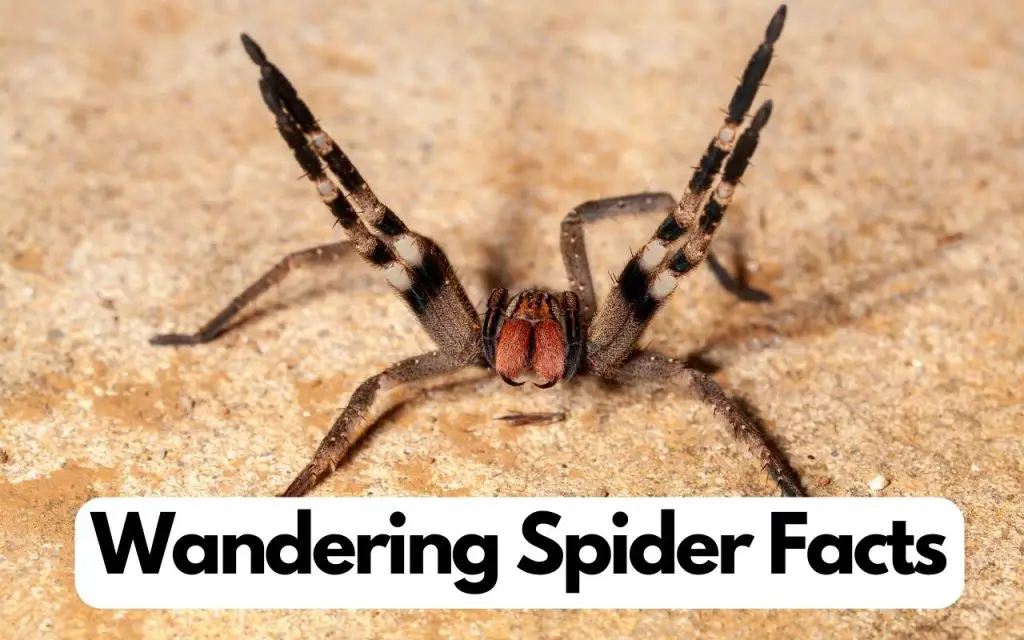
Brazilian Wandering Spider facts
Last updated on July 12th, 2023 at 01:48 pm
When you think of deadly spiders, there are a few names that spring to mind – but none more infamous than the Brazilian Wandering Spider. This species is reputed to have the most toxic venom of any spider, having a bite which causes horrendous side-effects like priapism and convulsions.
What you may not know, however, is that the Brazilian Wandering Spider name is actually used for a few species. The most common, and perhaps the most medically significant in the group are Phoneutria nigriventer and Phoneutria fera .
In this post, I’ll tell you more about these two species, from where they live, to what they eat. To keep things simple, I’ll just refer to them both as the “Brazilian Wandering Spider”, given how similar they are. Let’s dive in…
Quick Facts
To kick things off, here are some fascinating factoids about the Brazilian Wandering Spider:
- They belong to the genus ‘Phoneutria’, which translates to ‘murderess’ in Greek.
- They are known for their highly potent venom.
- Wandering Spiders are nocturnal creatures.
- They are also known as ‘banana spiders’ due to their tendency to hide in banana plants.
- They are not web-weavers but active hunters. This is called ‘cursorial’ hunting.
- It’s considered one of the most dangerous spiders in the world.
Other Common Names
The Brazilian Wandering Spider goes by several other names. The most common is the ‘banana spider’, thanks to their notorious habit of stowing away in banana shipments. In their native Portuguese, they’re known as ‘aranhas-armadeiras’ , translating to ‘armed spiders’ – a reference to their aggressive defense posture.
Brazilian Wandering Spider Venom
Possessing one of the most potent venoms among spiders, the Brazilian Wandering Spider’s bite is a cause for concern. Its venom is a complex cocktail of toxins, proteins, and peptides.
The main component that gets everyone’s attention is the neurotoxin, called PhTx3 , which can interfere with the functioning of our nervous system, leading to a variety of symptoms.
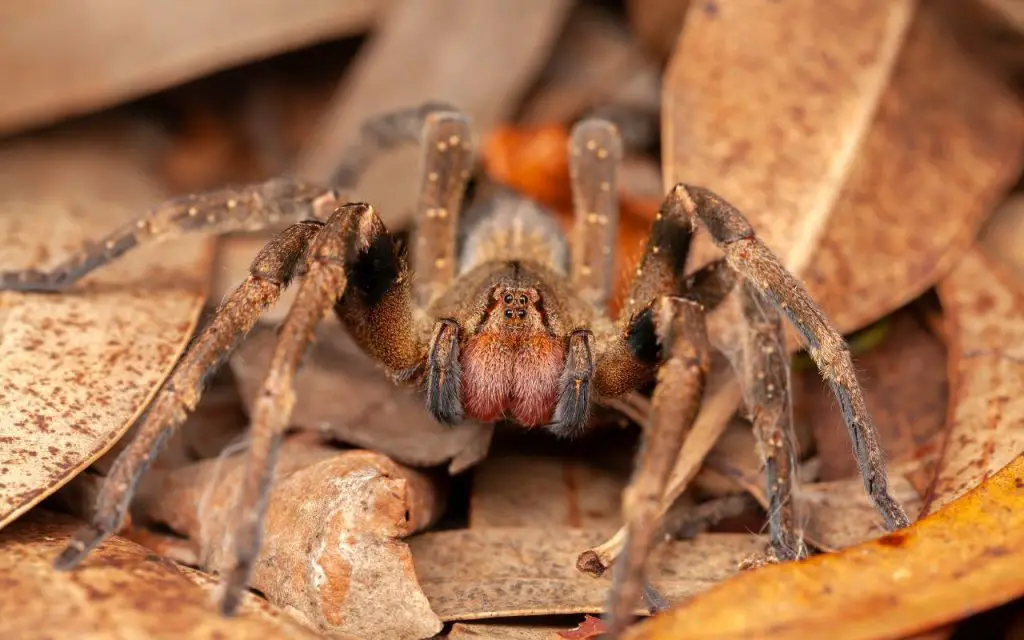
What’s the Benefit of Having Such Strong Venom?
With venom potent enough to kill a human, one might wonder why this spider needs such a powerful weapon. The answer lies in its lifestyle.
Brazilian Wandering Spiders are active hunters and their venom is primarily used to incapacitate prey quickly. The venom’s potency also serves as an effective deterrent against potential predators.
Brazilian Wandering Spider Deaths
Despite the notorious reputation, actual deaths from Brazilian Wandering Spider bites are rare. This is largely due to the rapid medical attention available in areas where these spiders are common. Plus, these spiders don’t always inject venom when they bite – a dry bite can occur.
This actually common in venomous animals, including spiders and reptiles. Occasionally they bite and decide to not inject any venom. The point of this is to conserve it, given that it is energetically costly to produce.
Brazilian Wandering Spider Size
Being quite large and impressive compared to most arachnids, adult Brazilian Wandering Spiders can reach a leg span of up to 7 inches (18 cm) . The body size excluding the legs can be up to 2 inches (5 cm). Their size contributes to their intimidating presence.
If you’d to learn more about why they get so big, check out my article on Brazilian Wandering Spider size for more info!
Brazilian Wandering Spider Location and Habitat
Brazilian Wandering Spiders are native to South America. Here’s a quick rundown of their range and preferred habitats:
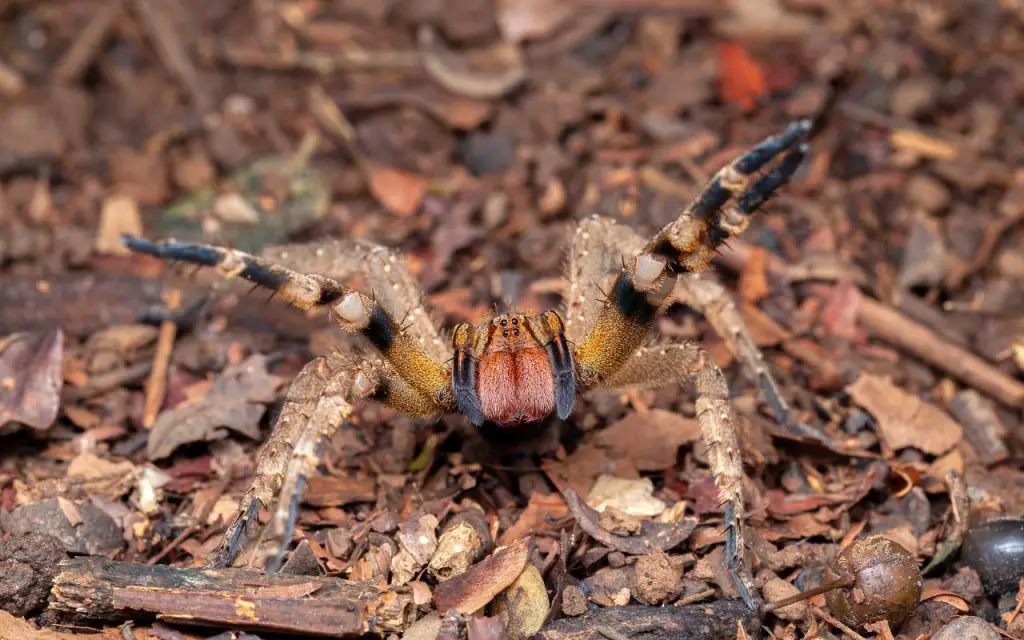
Brazilian Wandering Spider Speed
An adept hunter, the Brazilian Wandering Spider can move quickly when chasing prey or evading threats. While exact speed measurements can vary, some sources report that these spiders can achieve speeds up to 1 meter per second.

What Does the Brazilian Wandering Spider Eat?
The Brazilian Wandering Spider’s diet consists mainly of insects, other spiders, and occasionally small amphibians and reptiles. Their potent venom allows them to tackle prey larger than themselves, making them one of the apex micro-predators in their habitat.
Final Thoughts…
While the Brazilian Wandering Spider might seem terrifying to many, as an arachnid enthusiast, I find them to be incredibly fascinating. Their potent venom, hunting prowess, and adaptation to diverse habitats reveal the intricate beauty of the evolutionary process.
Just remember, these spiders, like all creatures, play a vital role in our ecosystem. Respect, not fear, should be our response to these remarkable arachnids.
The truth is that most bites are accidental, but they do occur. The fact that so few deaths occur each year is a testament to the effectiveness of the antivenom that has now become widely available.
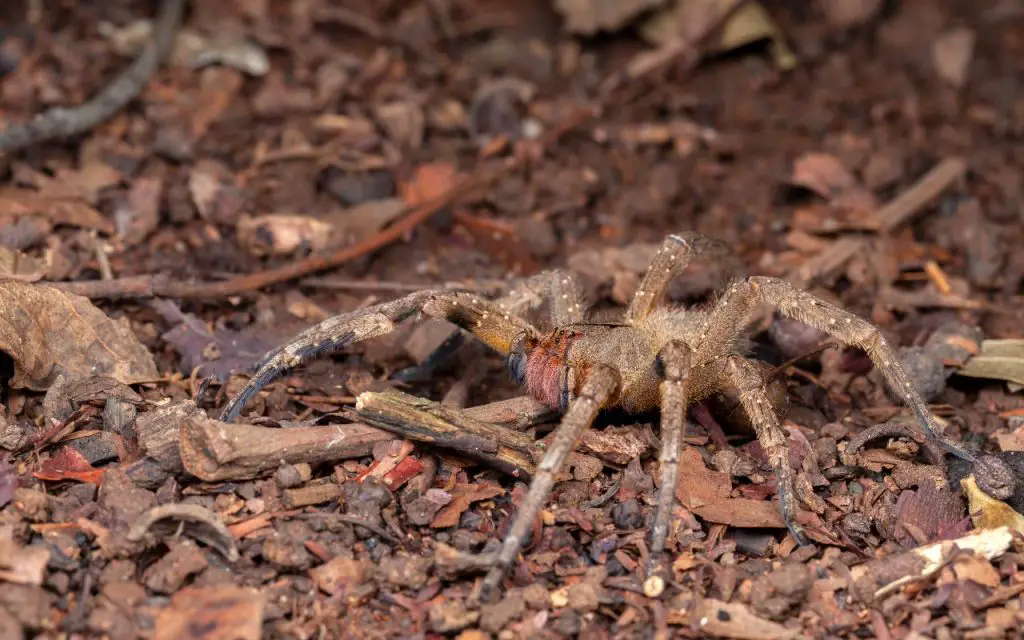
FAQ related to the Brazilian Wandering Spider
What happens if you are bitten by a brazilian wandering spider.
Immediately after a bite from a Brazilian Wandering Spider, you will experience localized pain. Then, within 5 to 15 minutes the area around the bite will swell. The swelling can spread to most of a limb, for example. Finally, neurological symptoms like coldness, sweating, and convulsions will set in.
Do wandering spiders jump?
Wandering Spiders are excellent at jumping. They can jump several feet when surprised, and may occasionally use this as a tactic to evade predators. Jumping at you isn’t part of how bites happen though. When faced with humans, Wandering Spiders usually stand their ground and use their threat display of raised legs to warn us away.
Is Brazilian wandering spider friendly?
Wandering Spiders are not friendly. As a general rule, they are relatively calm, but can also be defensive. They tend to see humans as a threat, and will not take to being handled easily. That said, they are not aggressive, and most bites happen when someone accidentally touches one or tries to kill it.
Are Brazilian wandering spiders in Australia?
Brazilian Wandering Spiders are not found in Australia. The only species in Australia that get as large as Wandering Spiders are the Huntsman Spiders. At a distance they may appear relatively similar, but Huntsman Spiders are completely harmless to humans.
Related Posts:
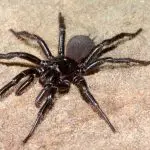
Leave a Comment Cancel Reply
Your email address will not be published. Required fields are marked *
Save my name, email, and website in this browser for the next time I comment.
Brazilian Wandering Spider Facts: What Happens If It Bites You?
Brazilian wandering spiders belong to the genus Phoneutria and are represented by eight spider species that are native to Central America and South America. This spider group is also collectively known as armed spiders and banana spiders. In Brazil, they are locally known as "aranha armadeira" which means armed spider. With these, some people often wonder if a person can survive after being by a member or species of this group.
What is a Brazilian Wandering Spider?
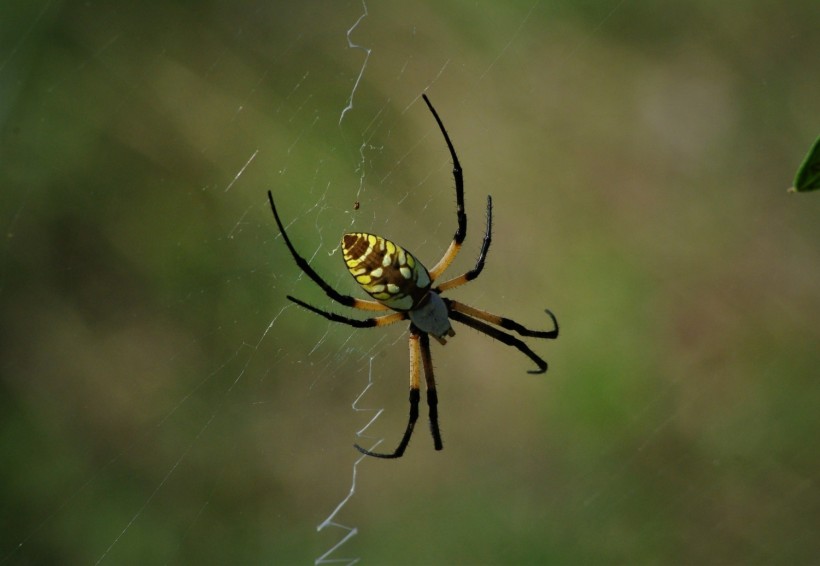
The genus Phoneutria , which the Brazilian wandering spider and related spider species belong to, was first described in 1833 when two species was included on it. The following century saw various scientists to move the Phoneutria species between genera Phoneutria and Ctenus . In 1936, Mello-Leitao restored Phoneutria and currently contains eight species, as reported by the University of Florida.
Banana spiders, a name given to the arachnid group due to their frequent presence on banana leaves, are large and robust arachnids in the family Ctenidae . They resemble the morphological appearance of wolf spiders. In addition, their body length can grow ranging from 17 and 48 millimeters and their leg span can reach 180 millimeters. Their distinct color ranges from light brown, brown, or grey. Furthermore, the natural habitats of armed spiders are forests.
Also Read: Deadly Erection-Giving Spider Crawls Out of Banana In Bristol
What Happens If It Bites You?
The natural prey of Brazilian wandering spiders includes small animals like crickets, mantids, and katydids, and larger ones like bats, frogs, and lizards. However, they can still bite humans and other animals not native in their habitats. In the past, scientists have identified that the bite of banana spiders living in Central and South American rain forests can lead to shortness of breath and excessive salivation.
According to wildlife experts, a Brazilian wandering spider bite can also lead to other serious symptoms, including increased blood pressure, above-normal pulse, and unusual respiratory rate, as well as extreme pain, hours-long penile erection, and death, in some cases. These spiders inject neurotoxin venom to its bitten victim and can be deadly to humans, particularly for children. However, it is not the world's deadliest spider.
Venomous Spider
In a study published in the journal Frontiers in February 2023, researchers stated that the Brazilian wandering spider is amongst the world's most dangerous venomous spiders in the world. In Brazil, there have been an estimated 4,000 envenomation accidents of Phoneutria nigriventer spider species each year in Brazil. Additional symptoms were also observed, including blurred vision, priapism, and vomiting.
The armed spider only follows the world's most venomous spider, which according to the Guinness World Records , is the Sydney funnel-web spider ( Atrax robustus ).
Like the Brazilian wandering spider, the venom of A. robustus can be neutralized by anti-venoms but some cases still lead to deaths when these arachnids bite a human, who did not receive any medical attention. Experts also weigh that the mortality of venom depends on the amount that enters a human body.
Related Article: Arachnophobia Nightmare: Giant Spider Found Inside Banana Box at Grocery Store in Germany
Tags Brazilian wandering spider , banana spider , Spider , spider bite , animals , Wild Animals
© 2024 NatureWorldNews.com All rights reserved. Do not reproduce without permission.

Southern Plains Weather Forecast: Severe Weather to Bring Flash Flood, Tornadoes This Week
![brazilian wandering spider bites man Tsunami Hazard Zones: New US Map Shows Places at Risk of Flooding and Tsunamis Amid Rising Sea Levels [NOAA]](https://1471793142.rsc.cdn77.org/data/thumbs/full/70325/280/157/50/40/tsunami-hazard-zones-new-us-map-shows-places-at-risk-of-flooding-and-tsunamis-amid-rising-sea-levels-noaa.jpg)
Tsunami Hazard Zones: New US Map Shows Places at Risk of Flooding and Tsunamis Amid Rising Sea Levels [NOAA]

Central US Weather Update: Tens Of Millions Of People At Risk For Winds, Hail, Floods

Florida: Dolphin Found Infected With Avian Flu; More Research Needed To Determine Cause, Experts Say

Intense Rain In UAE And Oman Most Likely Link To Climate Change Caused By Fossil Fuel Emission, Study Says
Medical Information

First Aid for Brazilian Wandering Spider Bite
What is a brazilian wandering spider bite.
Brazilian wandering spiders, also known as banana spiders, are one of the most venomous spiders in the world. They are found primarily in South and Central America and are known for their aggressive behavior and wandering tendencies.
Identification:
- Brazilian wandering spiders have a brown body with distinctive yellow markings on their legs
- They have long and slender legs that are covered in spines
- They have a small body, but their legs can span up to 6 inches (15 centimeters)
- They have two large fangs that are often visible when they open their mouth
What are the Causes of Brazilian Wandering Spider Bite?
Brazilian wandering spiders are venomous and are capable of causing serious envenomation when they bite.
- The venom of the spider contains a neurotoxin that attacks the nervous system, causing muscle spasms, breathing difficulties, and other severe symptoms
- The venom can also cause an excessive release of serotonin, leading to increased heart rate, sweating, and elevated blood pressure
What are the Signs and Symptoms of Brazilian Wandering Spider Bite?
The following signs and symptoms of Brazilian Wandering Spider Bite may be noted:
- Severe pain at the site of the bite that may radiate to other parts of the body
- Sweating and tingling sensations in the mouth and tongue
- Muscular twitching, spasms, and cramps
- Difficulty breathing or shortness of breath
- Nausea, vomiting, and abdominal pain
- Increased heart rate and high blood pressure
- Unconsciousness and convulsions
How is First Aid administered for Brazilian Wandering Spider Bite ?
Immediate actions:
- Clean the bite site with soap and water
- Put a wet, cold cloth, or an ice pack on the bite site
- Seek urgent medical attention, and bring the spider with you to help with identification, when possible
First aid administration:
- The First Aid for Brazilian Wandering Spider Bites includes cleaning the bite area and seeking medical attention
Who Should Administer First Aid for Brazilian Wandering Spider Bite?
- First aid for Brazilian Wandering Spider Bites should be administered by someone who is trained in providing first aid, such as a medical professional, a paramedic, or a trained first-aider
- If there is no one available with appropriate training, attempt to apply the pressure immobilization bandage and seek urgent medical attention
What is the Prognosis of Brazilian Wandering Spider Bite?
The prognosis for Brazilian Wandering Spider Bites depends on the severity of the symptoms and the timing of the treatment.
- If prompt medical attention is given, most patients can recover fully without any long-term effects
- However, delayed or inadequate treatment can lead to serious complications and even death
Long-term effects:
- There are generally no long-term effects of Brazilian Wandering Spider Bites if prompt medical attention is given
- However, in rare cases, patients may develop allergic reactions or experience chronic pain, muscle weakness, or other symptoms that persist long after the bite
How can Brazilian Wandering Spider Bite be Prevented?
A few helpful tips to prevent Brazilian Wandering Spider Bites include:
- Wear shoes and gloves when working in the garden or bush
- Check bedding and clothing before use, especially when stored in dark and cool areas
- Keep the house and garden free from clutter, including piles of rocks, leaves, and wood
- Install screens on doors and windows to prevent spiders from entering the house
- Use insecticides and spider repellents
What are certain Crucial Steps to be followed?
- If you live in areas where Brazilian wandering spiders are prevalent, it is essential to take necessary precautions to prevent being bitten.
- Learn how to identify Brazilian wandering spiders and their habitats to avoid them.
- If you suspect that you have been bitten by a Brazilian wandering spider, follow the immediate actions and first aid administration guidelines outlined above.
- Seek urgent medical attention, and bring the spider with you to help with identification.
- Do not attempt to catch or handle the spider, as this can increase the risk of being bitten.
In conclusion, Brazilian wandering spiders are a potentially deadly species of spider found in South and Central America. If you suspect that you have been bitten by a Brazilian wandering spider, it is crucial to seek urgent medical attention as soon as possible. Prevention is key to avoid being bitten, so take necessary precautions to keep yourself and your family safe from these dangerous spiders.
Hashtags: #BananaSpider #FirstAid #SouthAmericanWildlife #SpiderBites #SafetyTips
On the Article

Krish Tangella MD, MBA

Robert Ben Johnston, MD
Please log in to post a comment.
Related Articles
Test your knowledge, asked by users, related centers, related specialties, related physicians, related procedures, related resources, join dovehubs.
and connect with fellow professionals
Related Directories
At DoveMed, our utmost priority is your well-being. We are an online medical resource dedicated to providing you with accurate and up-to-date information on a wide range of medical topics. But we're more than just an information hub - we genuinely care about your health journey. That's why we offer a variety of products tailored for both healthcare consumers and professionals, because we believe in empowering everyone involved in the care process. Our mission is to create a user-friendly healthcare technology portal that helps you make better decisions about your overall health and well-being. We understand that navigating the complexities of healthcare can be overwhelming, so we strive to be a reliable and compassionate companion on your path to wellness. As an impartial and trusted online resource, we connect healthcare seekers, physicians, and hospitals in a marketplace that promotes a higher quality, easy-to-use healthcare experience. You can trust that our content is unbiased and impartial, as it is trusted by physicians, researchers, and university professors around the globe. Importantly, we are not influenced or owned by any pharmaceutical, medical, or media companies. At DoveMed, we are a group of passionate individuals who deeply care about improving health and wellness for people everywhere. Your well-being is at the heart of everything we do.
For Patients
For professionals, for partners.
Do Brazilian Wandering Spiders Bite?
Yes, the Brazilian Wandering Spider does bite. This arachnid species is known for its aggression and is considered one of the most poisonous spiders in the world.
A bite can cause severe medical conditions including intense pain, loss of muscle control, and difficulty breathing, although antivenom is available for treatment.
Can Brazilian Wandering Spider Bite Through Clothes?
Brazilian Wandering Spiders possess strong, potent fangs that are capable of biting through some lightweight or thin materials, which may potentially include certain types of clothing.
However, the likelihood of a bite penetrating thicker fabrics is less probable. Thus, while possible, it's not guaranteed that a bite would be able to penetrate all clothing materials.
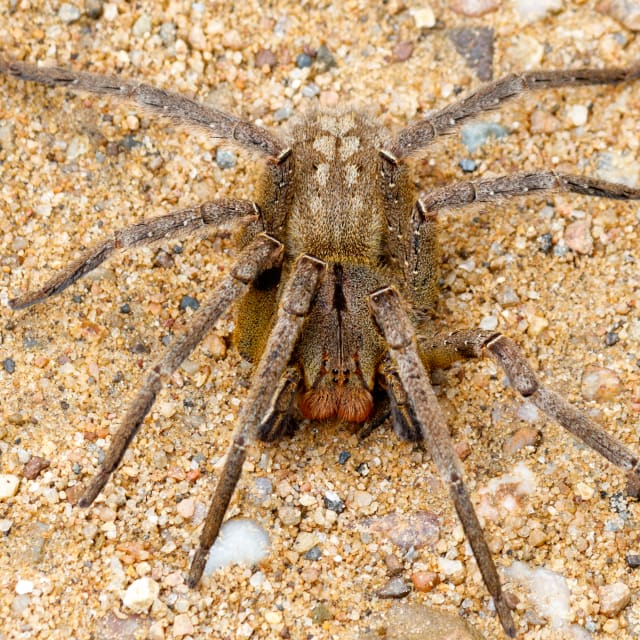
Do Brazilian Wandering Spider Bites Hurt?
Furthermore, if not treated promptly, the spider's venom can cause more severe symptoms, including sweating, high blood pressure, and even heart problems. It's important to seek medical help immediately after a bite.
FAQs about Brazilian Wandering Spider Bites
1. do brazilian wandering spiders bite or sting.
Yes, Brazilian Wandering Spiders do bite, they do not sting.
2. Do Brazilian Wandering Spiders bite humans?
Brazilian Wandering Spiders do bite humans.
3. Are Brazilian Wandering Spider bites dangerous?
Yes, Brazilian Wandering Spider bites are dangerous. They are considered to be one of the most venomous spiders in the world.
4. What happens if a Brazilian Wandering Spider bites you?
If a Brazilian Wandering Spider bites you, you may initially experience severe pain and swelling, followed by other symptoms such as sweating, high or low blood pressure, tachycardia, and blurred vision. If untreated, the venom can be life-threatening.
Also check:
Other Bugs' Bites
Check information about other bugs and learn if they bite or not and what you should do in case they bite.
Brazilian Wandering Spider Profile
Check the profile of Brazilian Wandering Spider and learn more interesting information about them.

Fact Animal
Facts About Animals
Brazilian Wandering Spider Facts
Brazilian wandering spider profile.
There are more than 50,000 species of spider, and the vast majority are less dangerous than a honeybee. Almost none are aggressive, and of those with medically significant venom, only a small percentage are capable of causing death. So, on the whole, arachnophobes are just being a bit silly.
But there’s one spider that vindicates all of these fears, and few animals are as globally renowned to be a serious threat to human lives as the Brazilian Wandering Spider .
Brazilian Wandering Spiders are actually 9 species of spider in the same genus ‘Phoneutria’, one of which is found in Central America, with the rest in South America.
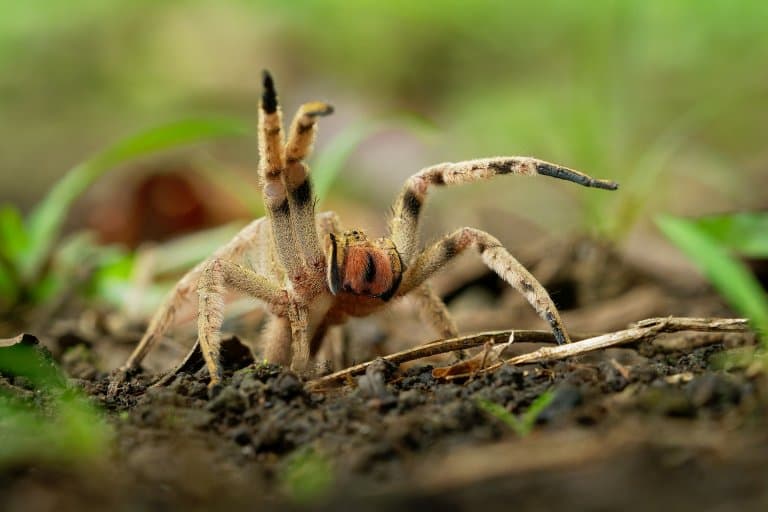
Brazilian Wandering Spider Facts Overview
These spiders are called wandering spiders because of instead of spinning a web to wait for food, or occupying a lair, they spend their night wandering in the leaf litter of the jungle floor for prey.
The sensitive hairs on its body help detect vibrations of passing prey, and it will feed on insects, lizards, frogs and any animals as large as itself.
During the day they will hide under logs, rocks, or inside termite mounds and banana plants. They will also sometimes wander into urban areas and homes, where they can come into contact with humans.
Brazilian wandering spiders are aggressive , dangerous and frightening. For once, this is an animal you should be wary of.
The females are larger, around 50% heavier than males, and produce more venom, and this might be a clue as to why their Greek name translates to “ Mudress” . These spiders will often stand and fight and have an intimidating threat display.
The potency of their venom is one of the reasons they’re so dangerous, and their ability to hide away in fruit and shoes explains why most bites are on extremities.
Interesting Brazilian Wandering Spider Facts
1. armed spiders.
In Brazilian, these are sometimes known as armed spiders, on account of their elongated front legs.
They can convey quite a bit of information with these legs, and as wandering spiders, use them to get about the forest, looking for food.
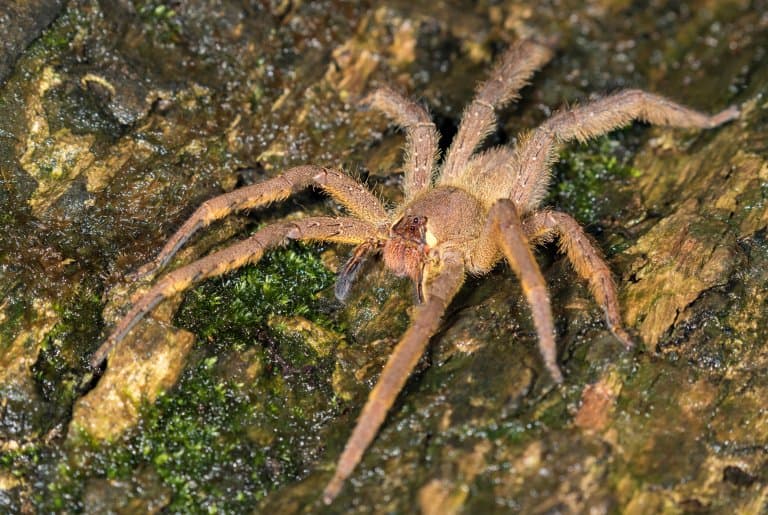
2. Banana Spiders
They’re also sometimes called ‘banana spiders’ on account of their status as a stowaway on popular fruit imported from the tropics.
This is becoming less common as stricter regulations ensure there’s less contamination of fruits, but there’s always a chance your next bunch of bananas will have a family of these spiders living inside it.
3. They have the largest venom glands of any spider
Females produce more venom than males, but both sexes have enormous venom glands. These glands are even more impressive when you consider the size of the spider is significantly less than the largest around.
The venom glands of the Brazilian Wandering Spider are over a centimetre long, and this is all housed inside the bright red chelicerae (mouth parts) which they are quick to display whenever they get upset. 1
4. They’re aggressive
These spiders can grow quite large and have long, brightly-coloured legs. Unlike most spiders, they’re known to stand their ground when threatened and are far quicker to bite than many other species.
They’ll still try to scurry away where possible, and they’re not out to get anybody.
But where most other species will flee, the wandering spiders’ aggression does make it more likely to be involved in incidents.
Most bites are on fingers and toes, a sign that they’re being stepped on or grabbed inadvertently. When the spider feels cornered, it’ll rear up on its back legs and waves its colourful arms around as a warning.
Then it’ll sway side to side, beckoning you to have a go. Anything foolhardy enough to call this bluff gets a wealth of envenomation effects. 2 3
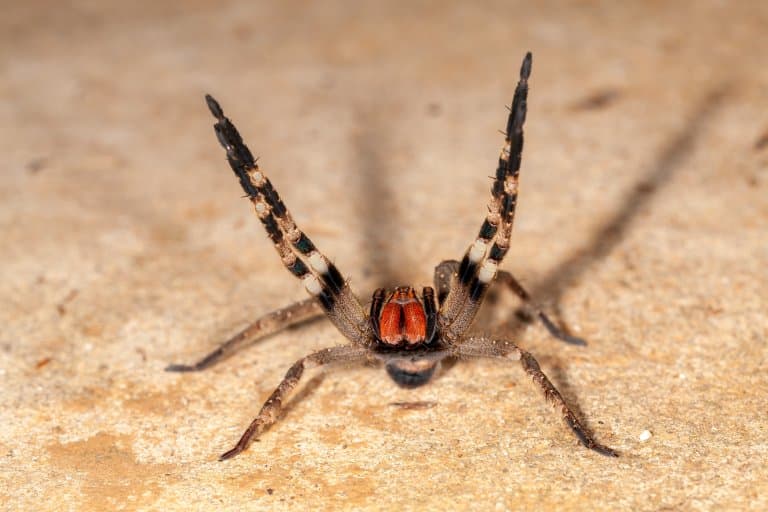
5. They give some men erections
There are ways to accomplish this with fewer side effects, but a bit from a Brazilian wandering spider does come with a certain Viagral quality.
This isn’t as fun as it might sound. Prolonged erections in this manner are likely to harm and destroy muscles and blood vessels in the penis and could cause irreparable damage.
Besides this, the assault on the central nervous system that comes with envenomation by this spider doesn’t sound worth it. 4
6. And some people die
This assault brings with it a whole host of unpleasant symptoms. Seizures, foaming at the mouth, inability to speak, collapse, and a host of other miserable experiences.
Paralysis is possible, as is cardiac shock. Blood vessels can burst in the brain, or anywhere else, and in many cases, this can be enough to kill a person.
This spider has one of the most potent venoms of all, and there are multiple legitimate records of death as a result of bites.
7. But they’re rarely fatal
While the Brazilian wandering spider is potentially one of the most dangerous spiders in the world, there is some evidence to suggest it gives a dry bite, defensively.
This means that despite exceptionally toxic venom, the amount actually injected is less than some of the other contenders, and this is what makes it typically less lethal than the Australian funnel webs.
These spiders are classified as Dangerous Wild Animals and would therefore require a special permit to keep. Bites from wandering spiders are common in South America, but antivenom is often readily available, and they rarely result in death.
In most cases, lethal bites are cases of a very young or very old victim, and few people of healthy age are killed. 5
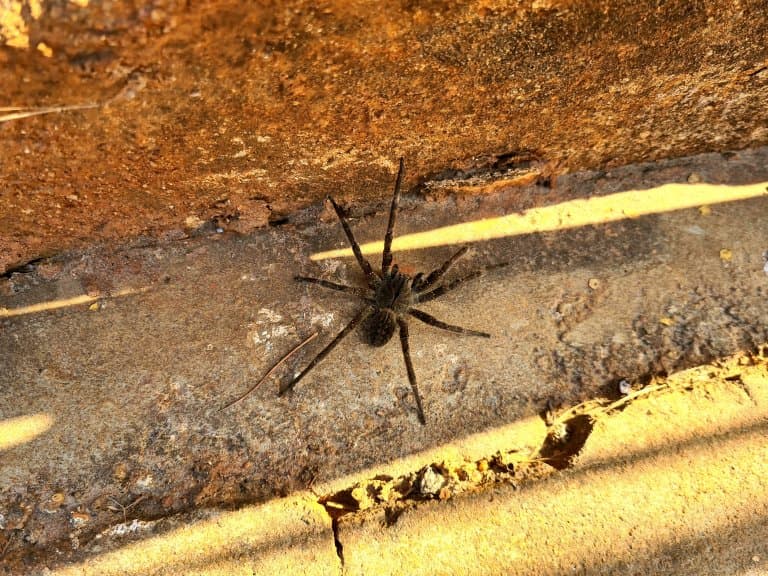
8. They do invade the UK sometimes
These unquestionably scary spiders show up in supermarkets in the UK on occasion, having hitched a ride on banana shipments.
On more than one occasion they’ve made their way into shoppers’ homes, but it doesn’t appear that there are any cases of them biting people as a result.
These spiders aren’t suited for temperate climates and don’t survive Winter, so there’s no risk of them multiplying.
Brazilian Wandering Spider Fact-File Summary
Scientific classification, fact sources & references.
- PeerJ. (2017), “ Dimensions of venom gland of largest venom glands in all spiders ”, Bio Numbers.
- Dave Clarke (2010), “ Venomous spider found in Waitrose shopping ‘beautiful but aggressive’” , The Guardian.
- “ Phoneutria Perty (Arachnida: Araneae: Ctenidae) ”, UF-IFAS University of Florida
- Kátia R.M. Leite (2012), “ Phoneutria nigriventer spider toxin Tx2-6 causes priapism and death: A histopathological investigation in mice ”, Science Direct.
- “ Brazilian wandering spiders: Bites & other facts ”, Live Science.

Wellcome to SpiderZoon
What happens if a Brazilian wandering spider bites you?
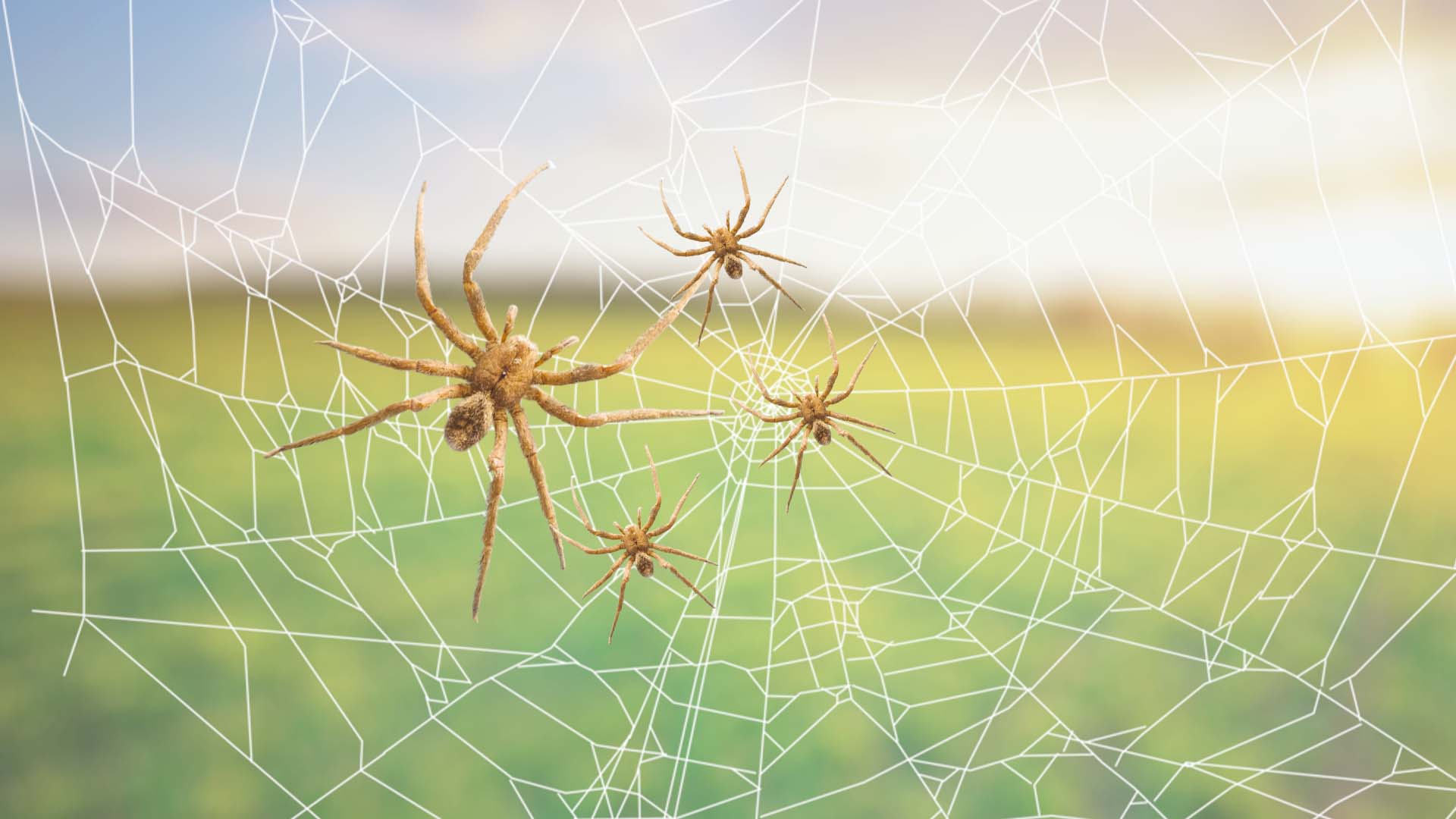
Recently, I had a rather unexpected and nerve-wracking encounter with a Brazilian wandering spider. These arachnids are infamous for their potent venom and are considered one of the most venomous spiders in the world.
Today, I’ll share my personal experience and shed light on what happens if you find yourself on the receiving end of a Brazilian wandering spider bite.
The Encounter
It all started innocently enough. I was exploring a dense rainforest in Brazil, marveling at the diverse wildlife that surrounded me. Little did I know that a tiny arachnid would soon become the focus of my attention. As I reached out to grab onto a tree branch for support, I felt a sharp, sudden pain on my hand. Instinctively, I pulled back and saw a Brazilian wandering spider hastily retreating.
Immediate Effects
The pain from the bite was intense and immediate. I could feel a tingling sensation spreading from the bite site, and my hand began to swell. The venom of the Brazilian wandering spider contains a potent neurotoxin that affects the nervous system, leading to a range of symptoms.
Neurological Symptoms
Within a short span, I began to experience neurological symptoms. My vision became blurry, and I felt a sense of dizziness and confusion. The venom was taking its toll on my nervous system, causing disruptions in normal sensory and motor functions.
Excruciating Pain
The pain from the bite continued to intensify, radiating from the bite site to the surrounding areas. Brazilian wandering spider venom is known to cause severe pain, and in my case, it felt as if my entire hand was on fire. The venom acts on the nervous system, amplifying pain signals and making the experience incredibly uncomfortable.
Medical Intervention
Recognizing the severity of the situation, I sought immediate medical attention. It’s crucial to note that a Brazilian wandering spider bite can be life-threatening, especially if left untreated. Antivenom is available, and timely administration is vital to counteract the effects of the venom.
Thanks to prompt medical intervention, I was able to recover from the Brazilian wandering spider bite. The symptoms gradually subsided, and after a period of rest and observation, I was deemed fit to resume normal activities.
Is the Brazilian wandering spider poisonous?
Yes, the Brazilian wandering spider (Phoneutria) is indeed venomous, not poisonous. The terms “venomous” and “poisonous” are often used interchangeably, but they have distinct meanings.
Venomous refers to organisms that inject venom into their prey or attackers using specialized structures such as fangs or stingers. In the case of the Brazilian wandering spider, it delivers venom through its fangs when it bites.
On the other hand, “poisonous” describes organisms that are harmful when touched or consumed. Poisonous organisms typically have toxins that are harmful if they come into contact with the skin, eyes, or if ingested.
The Brazilian wandering spider is venomous because it injects venom through its bite, not poisonous because it doesn’t pose a threat through contact or ingestion unless the venom is introduced into the bloodstream.
Brazilian Wandering Spider Venom
The venom of the Brazilian wandering spider (Phoneutria) is a potent mixture of various toxins. The primary components of the venom include neurotoxins, which affect the nervous system. The specific composition of the venom can vary among individual spiders and across different species within the Phoneutria genus.
The neurotoxins in the venom target ion channels and receptors in nerve cells, leading to the disruption of normal nerve function. This can result in a range of symptoms, including severe pain, muscle spasms, paralysis, and in extreme cases, respiratory failure.
The Brazilian wandering spider’s venom is considered to be one of the most potent among all spiders, and it has gained notoriety for causing intense pain and, in rare cases, more severe systemic effects. However, it’s essential to note that fatalities from Brazilian wandering spider bites are extremely rare, thanks in part to the availability of antivenom and prompt medical intervention.
If bitten by a Brazilian wandering spider, seeking immediate medical attention is crucial, and antivenom may be administered to counteract the effects of the venom.
Encountering a Brazilian wandering spider is not an experience I would wish upon anyone. The venomous bite can lead to a cascade of neurological symptoms and excruciating pain. If you ever find yourself bitten by one of these spiders, seeking immediate medical attention is crucial for a swift and successful recovery. Remember, in the realm of wildlife, caution and respect are your best allies.
Leave a Reply Cancel reply
Your email address will not be published. Required fields are marked *
Save my name, email, and website in this browser for the next time I comment.
Related Article
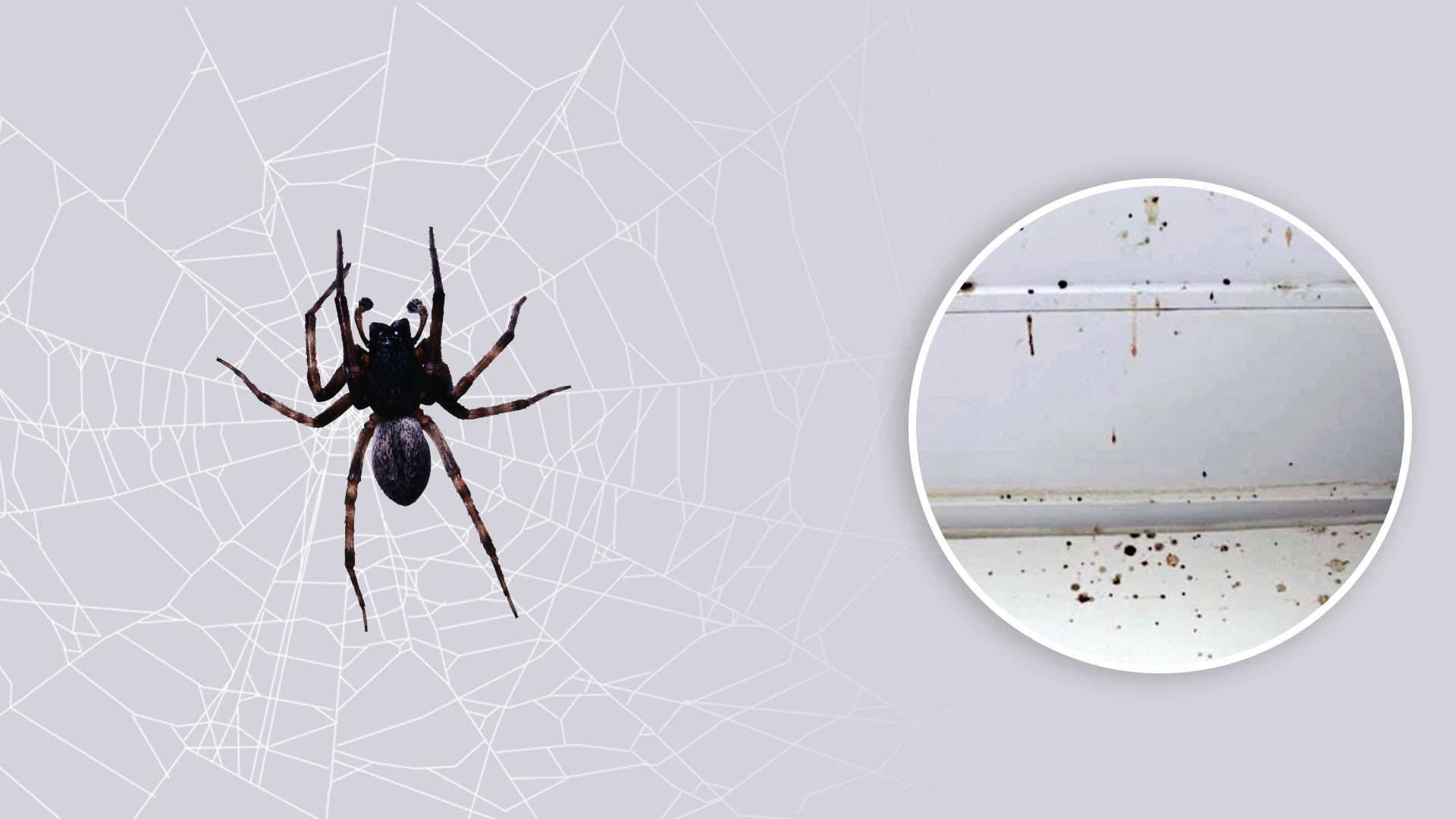
Is Spider Poop Dangerous? Stay Safe (Update in 2024)
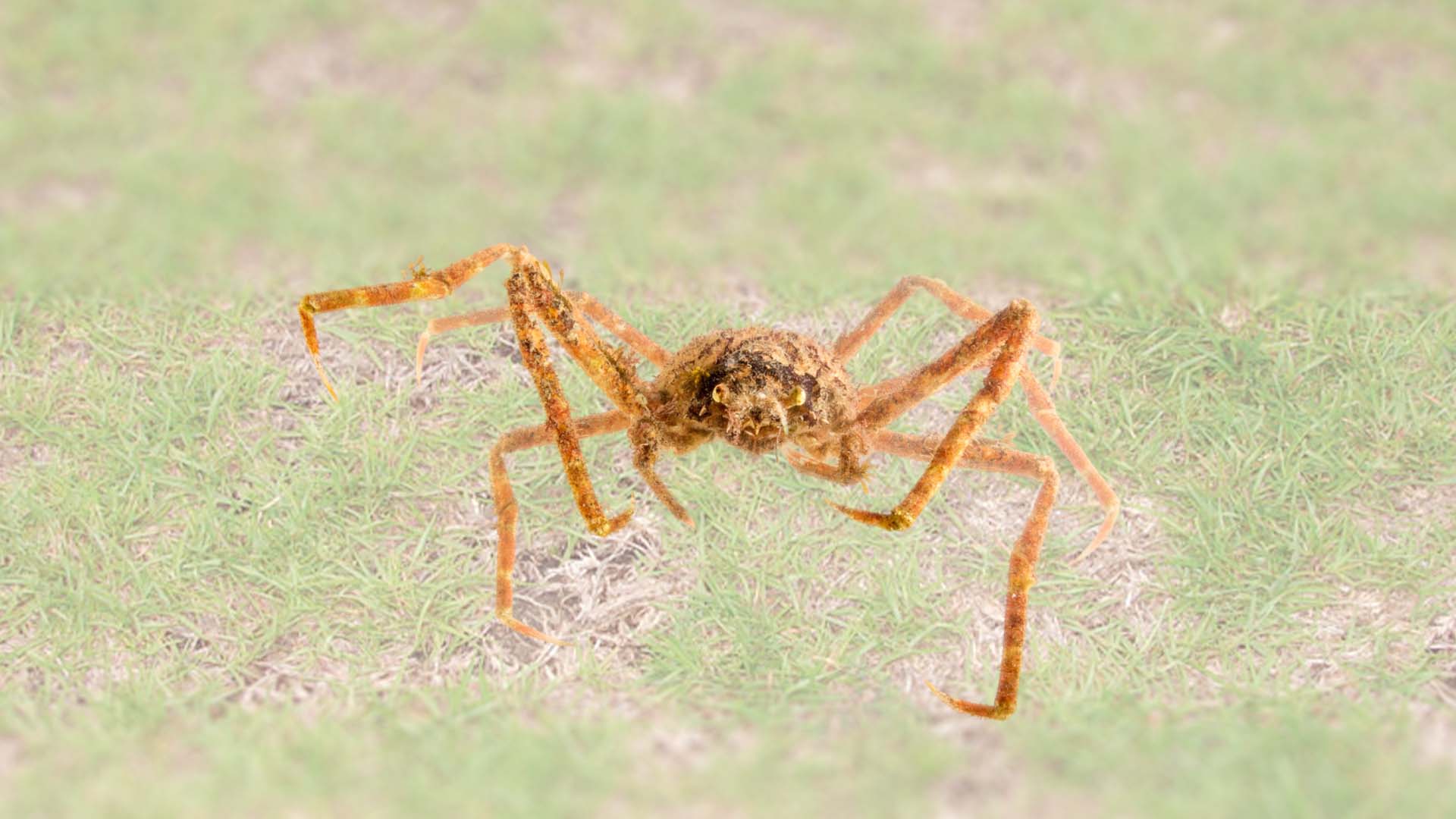
7 Spider That Looks Like A Crab In 2024 (ID & Pictures)
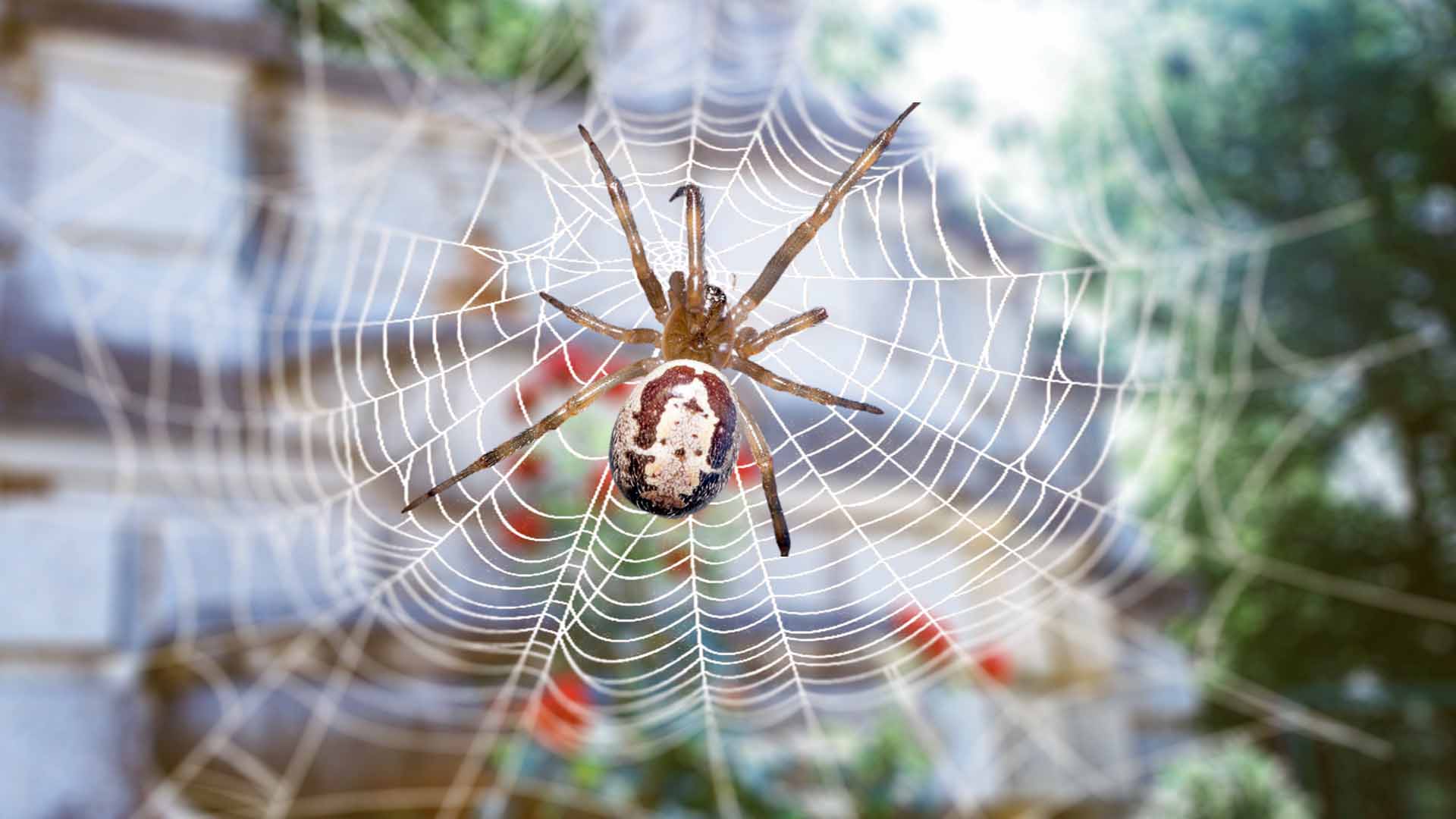
A Simple Guide: How To Identify a False Widow Spider?
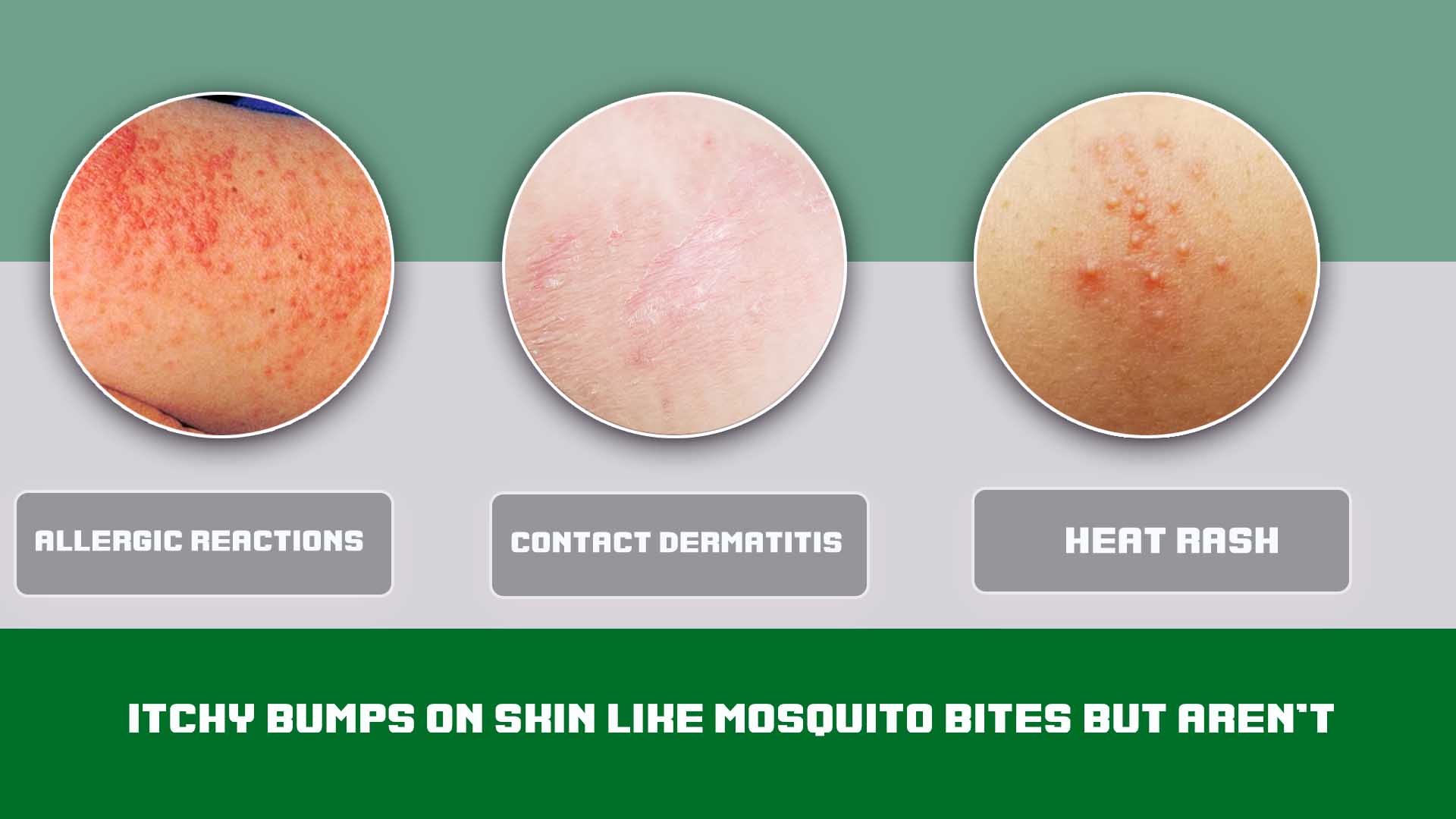
Guide: Itchy Bumps on Skin Like Mosquito Bites But Aren’t

Brazilian Wandering Spider: Care, Food, Habitat & Preventions
Mike Wallace
Have you ever heard of or do you know what a Brazilian wandering spider is ? It is a big venomous spider from places like Central and South America, and people sometimes call it the banana spider . Why? Well, we are about to find out!
Table of Contents
These wandering spiders are aggressive hunters who go out on the hunt at night. Their meals include both invertebrates (like insects) and vertebrates (creatures with a backbone, like small animals).
These spiders are super dangerous because their venom is like a powerful potion that can make people really sick or even worse. They usually hang out in tropical rainforests and even in cities, hiding in banana plants.
So, let’s get more information about the world of this sneaky spider to learn the details about its looks, eating habits, where it lives, the venom it carries, and find out if it is genuinely risky. Ready to explore? Keep reading!
Brazilian Wandering Spider Description:
Scientific name and family:.
In Brazil, they are sometimes known as “ armed spiders ” (armadeiras), and they share the name “ banana spiders ” with a few other spiders. They have different names, but they are all talking about the same interesting spider!

The Brazilian wandering spider, scientifically known as Phoneutria , Maximilian Perty kickstarted the Phoneutria genus in 1833. The name comes from the Greek word φονεύτρια , which means “murderess” and falls under the Animalia kingdom, Arthropoda phylum, and Arachnida class.
Within Arachnida, it is classified in the order Araneae, infraorder Araneomorphae, and Ctenidae family. The genus Phoneutria, described by Perty in 1833, includes the type species Phoneutria fera .
This classification helps us understand where these spiders fit into the larger picture of living organisms.
The following 9 species are accepted by The World Spider Catalog :
- Phoneutria bahiensis
- Phoneutria boliviensis
- Phoneutria eickstedtae
- Phoneutria fera
- Phoneutria keyserlingi
- Phoneutria nigriventer
- Phoneutria pertyi
- Phoneutria reidyi
- Phoneutria depilata
What do Brazilian Wandering Spider look like?
Size range:.
The spiders in the Phoneutria group can get pretty big in size. Their legs can stretch out to be 13 to 18 centimeters (5 to 7 inches) wide, and their bodies can have a range between 17 to 48 millimeters (a little more than half an inch to almost 2 inches) long.
The female Brazilian spiders can get pretty big, reaching up to 15 centimeters (5.9 inches) in length. On the other hand, the males are smaller, usually measuring around 7 centimeters (2.8 inches). They usually weigh up to 0.21 ounces.
They have long, slender legs, and even though some other spiders with different names might have longer legs, the Phoneutria spiders are champions when it comes to having the longest bodies and being the heaviest in their spider gang.
The spider’s body has two main parts. The first is the prosoma, kind of like its “head,” where you will find all eight legs, eyes, fangs (chelicera), and little multitasking arms (pedipalps).
The second part is the opisthosoma, holding the spinnerets for making silk, the back end opening (anal opening), “the lungs,” the heart, and the important bits for making baby spiders (reproductive organs).
So, the prosoma is like the front control center, and the opisthosoma is like the back office, handling things like silk-making and baby-making.
Brazilian spiders come in different colors, with most being hairy and shades of brown and gray. Some species may have lightly colored spots on their abdomen.
A distinctive feature of many species is the presence of bands of black and yellow or white on the underside of their two front legs.
Identification:
To identify a spider from the Phoneutria group, look for a dense brush of fine hairs on their leg parts. They might seem like other spiders, especially Cupiennius , but here is how you can differentiate:
- Phoneutria often have a dark line on the front of their palps and a thin black line on top of their head.
- Check underneath, too; their legs usually have dark parts and light joints. Sometimes, the belly has black dots or is reddish.
- Usually it has been observed that when they are upset, they do a cool defensive move like lifting their front legs high with a distinctive pattern. So, if you see a spider doing that dance, it is probably a Phoneutria!
Brazilian Wandering Spiders live all over the Americas, from Costa Rica to northern Argentina. They are like the residents of the jungle, chilling in forests east of the Andes in countries like Colombia, Venezuela, Ecuador, Peru, Bolivia, Brazil, Paraguay, and the Guianas.
Some, like P. reidyi, P. boliviensis, and P. fera, love the Amazon rainforest, while others prefer the Atlantic Forest in Argentina, Paraguay, and Brazil.
They have also made themselves at home in the Cerrado savanna. But if you head to northeastern Brazil, they are not around. These spiders have even taken trips to Chile and Uruguay.
Why are they called Banana Spiders?
These spiders are linked with bananas. Richard S. Vetter, a researcher at the University of California, found that these powerful spiders sometimes end up in North America and Europe by accident, hitching a ride in banana shipments.
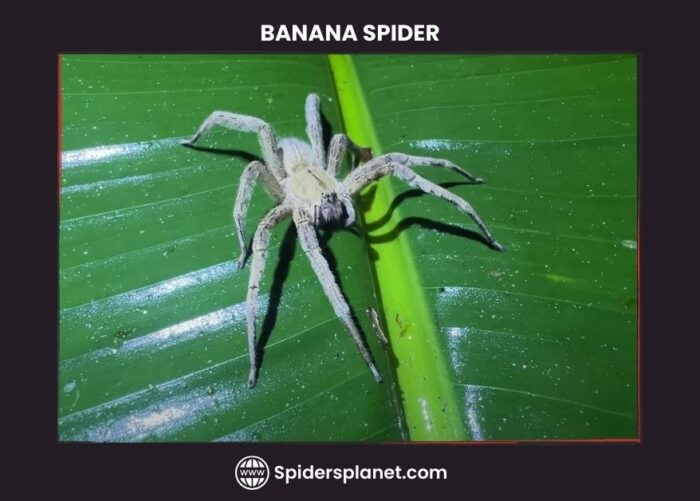
But it is often a case of mistaken identity. Only a few Phoneutria species have been found in banana shipments, and sometimes, other spiders get the blame due to misidentification.
What They Like to Eat or Hunt?
Their food includes flies, beetles, butterflies, moths, grasshoppers, locusts, and crickets. Occasionally, they might even feast on small creatures like amphibians, reptiles, or mice. All these diet or food findings tell us about how diversified eating habits these fascinating spiders have.
Mating and Lifecycle:
Like most spiders, the female spiders are bigger than the males. When the male spider wants to be friends, they do a little dance (vibrating his pedipalps and specialized sensory appendages) to signal his intentions to impress the female, but it is a cautious approach.
The behavior of the female can be choosy, and she might say no to a few before picking the right one.
After the dance, sometimes, the females decide to attack them, or if she is interested, she can store the male’s baby-making material in a special place until she is ready to use it.
Then, she lays a bunch of eggs, up to 1,000 at a time, and keeps them safe in a silk egg sac. Sadly, after laying her eggs, the mom spider says goodbye. It is her way of making sure the new spiders are ready to explore the world on their own.
The lifespan of the banana spider (Phoneutria nigriventer) differs for males and females. Females usually live for 6 to 8 weeks after reaching maturity, while males have a shorter lifespan of 2 to 3 weeks after their last molt.
Certain mammals, like coatis (Procyonidae, which includes raccoons) and other small insectivores, birds are potential predators of large wandering spiders.
These spiders got their name as wandering spiders because of the fact that they are not into web building. Instead, they stroll around the forest floor at night(nocturnal), searching for dinner.
Brazilian Wandering Spiders are active hunters and use both ambush tactics and direct attacks to catch their prey. During the day, they prefer cozy spots like under logs or in crevices, only emerging at night for their hunting adventures. These spiders do not build nests like other spider species.
While wandering spiders are not naturally aggressive towards humans, they won’t hesitate to bite if they feel cornered or threatened. Most bites happen when a spider accidentally gets trapped in clothing or bedding.
Bite and Venom:
The bite of the armed spider is the most dangerous in the world as the venom it carries can be harmful to humans.
The danger is not just about how strong the venom is; it is also about factors like the spider’s likelihood to bite and how close it is to where people live.
These spiders often hide in houses, clothes, and other dark places during the day, making accidental bites more likely.
While their fangs are adapted for small prey, some experts think they might give a “dry” bite in defense to save venom. Studies suggest that not all bites inject venom, and serious cases requiring antivenom are rare.
However, there have been confirmed cases of death, with symptoms appearing quickly, including:
- Severe pain
- Breathing difficulties
- Increased heart rate and blood pressure
- In severe cases, paralysis and death
The severity can depend on the spider’s sex, with females generally more dangerous. The spiders produce less venom in colder months, and a small amount can be potent enough to harm.
Fortunately, bites from Brazilian spiders are rare, and when they do occur, the exposure to the toxins is generally mild, as explained by Vetter.
Also Read: What is a Huntsman Spider? (Heteropodidae) – The Ultimate Guide
Banana Spider’s Facts:
Below are essential details about Brazilian wandering spiders:
- They hold the title for the world’s largest spiders , boasting leg spans reaching up to 15 centimeters (6 inches).
- Their venom packs a powerful punch, capable of inducing severe pain, paralysis, and, in extreme cases, fatal outcomes for humans.
- Despite their intimidating reputation, they are generally non-aggressive and resort to biting only when provoked.
- These spiders inhabit tropical rainforests and urban areas across Central and South America.
- In case someone has been bitten by this spider, he/she needs quick medical treatment to control the effects timely.
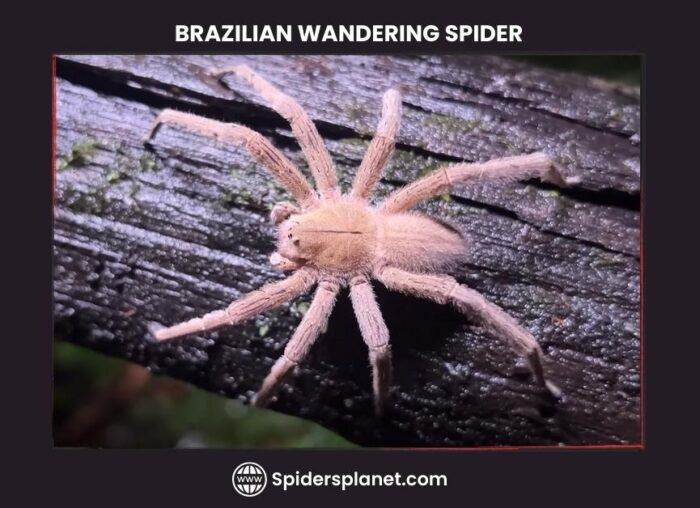
Treatment and Preventive Measures:
If bitten by a wandering spider or armed spiders, prompt medical attention is crucial. There is an antivenom for the spider’s venom, but its effectiveness is highest when administered within a few hours of the bite.
To prevent a bite:
- Wear protective clothing, use shoes and long pants when in areas where these spiders are found.
- Before wearing your clothes and shoes, make sure to check them to ensure no spiders are hiding.
- Maintain cleanliness and avoid leaving food or garbage exposed, as this can attract spiders.
These preventive measures are essential for minimizing the risk of encountering and getting bitten by Banana spiders.
Can Brazilian spiders kill humans?
Brazilian wandering spiders (Phoneutria nigriventer) are venomous and can potentially kill a human with a single bite. Their venom contains a potent neurotoxin that can cause severe pain, paralysis, and even death.
Are Brazilian spiders poisonous?
Yes the venom of this spider is poisonous, that can cause death. While Brazilian wandering spiders are potentially dangerous, actual bites are relatively rare.
By adopting preventive measures and promptly seeking medical attention if bitten, the risk of serious complications can be significantly reduced.
Can you keep Brazilian spiders as pets?
It is strongly advised against keeping wandering spiders as pets due to their venomous nature and the potential risk to human safety.
Managing these spiders in captivity demands specialized knowledge and handling procedures to minimize the risk of bites.
Final Thoughts:
The Brazilian wandering spider, banana spider, or armed spider is a large and venomous arachnid found in Central and South America. While their potent venom can be harmful to humans, encounters are rare.
These nocturnal hunters have adopted various habitats, from rainforests to urban areas, and are associated with banana shipments. Understanding their appearance, behavior, and habitat is crucial for minimizing risks.
Seeking immediate medical attention after a bite is essential, as antivenom is available but most effective when administered promptly. Despite their fearsome reputation, the Brazilian spider remains a captivating and potentially dangerous species.
About the author
Spiders Planet is the ultimate source of information about spiders! All the articles on this site will provide you with the most accurate and up-to-date information written by me and a group of writers, that is well-researched and fact-checked before it’s published.
Leave a Reply Cancel reply
Your email address will not be published. Required fields are marked *
Save my name, email, and website in this browser for the next time I comment.
Latest posts

Do Spiders Eat Fruit? Unveiling the Secrets
The connection between animals and fruits showcases a captivating example of mutualism, a win-win relationship where both parties benefit. Animals gain access to…

Are Woodlouse Spiders Venomous?
The Woodlouse spider (Dysdera crocata) is a spider species that mainly hunts and feeds on woodlice and is mostly found in Africa, Asia,…

What Does Wolf Spiders Eat?
Wolf spiders are excellent hunters of small insects. Unlike spiders that weave intricate webs, these predators rely on sharp vision and stealthy moves…

Brazilian Wandering Spider Bite
Published: June 2, 2023
- Facebook 109
Are you aware that the Brazilian wandering spider is among the most venomous spiders globally? In this article, we will go into further detail about the Brazilian Wandering Spider Bite.
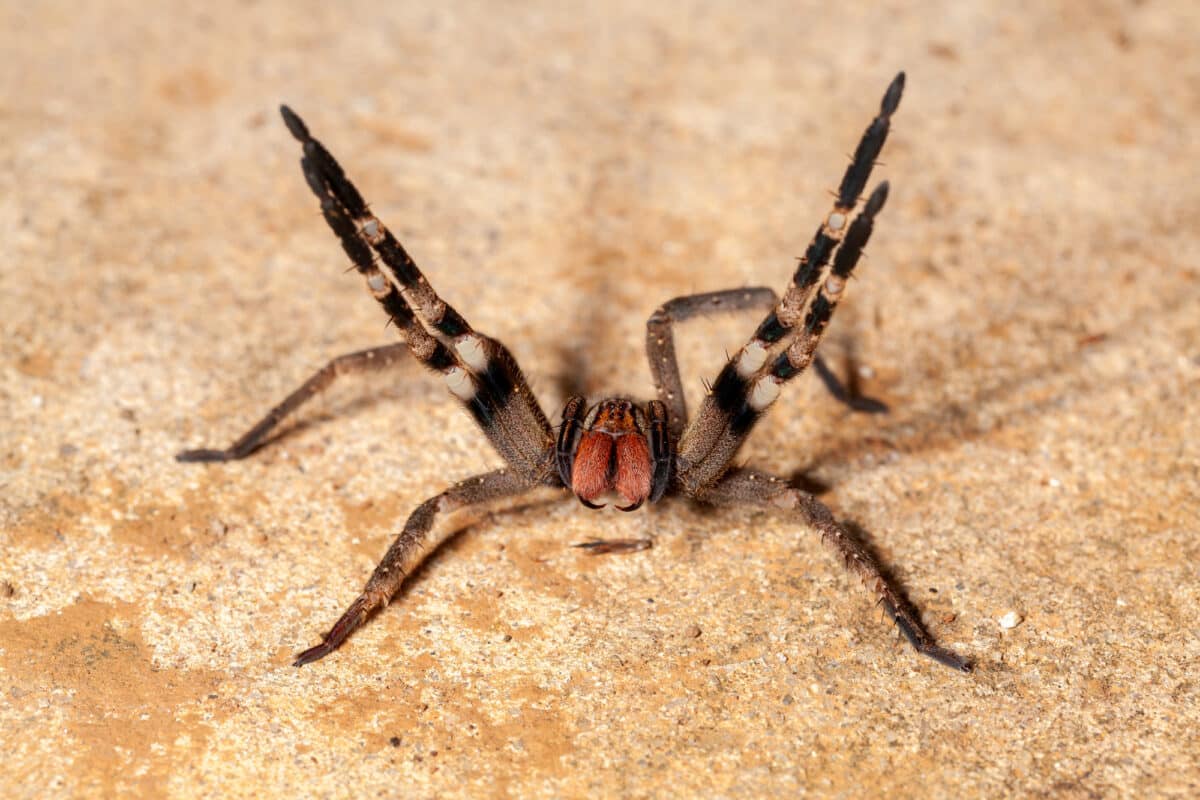
This innocuous-looking arachnid has a bite that can cause intense pain and other serious symptoms, such as paralysis, difficulty breathing, and even death.
Despite its reputation, however, with prompt medical treatment, most bites from this species are rarely life-threatening.
Let’s explore what causes a Brazilian wandering spider bite and how you can treat one if unfortunate enough to experience it.
Want to jump ahead? Click below
What Is A Brazilian Wandering Spider, And Why Is It Dangerous
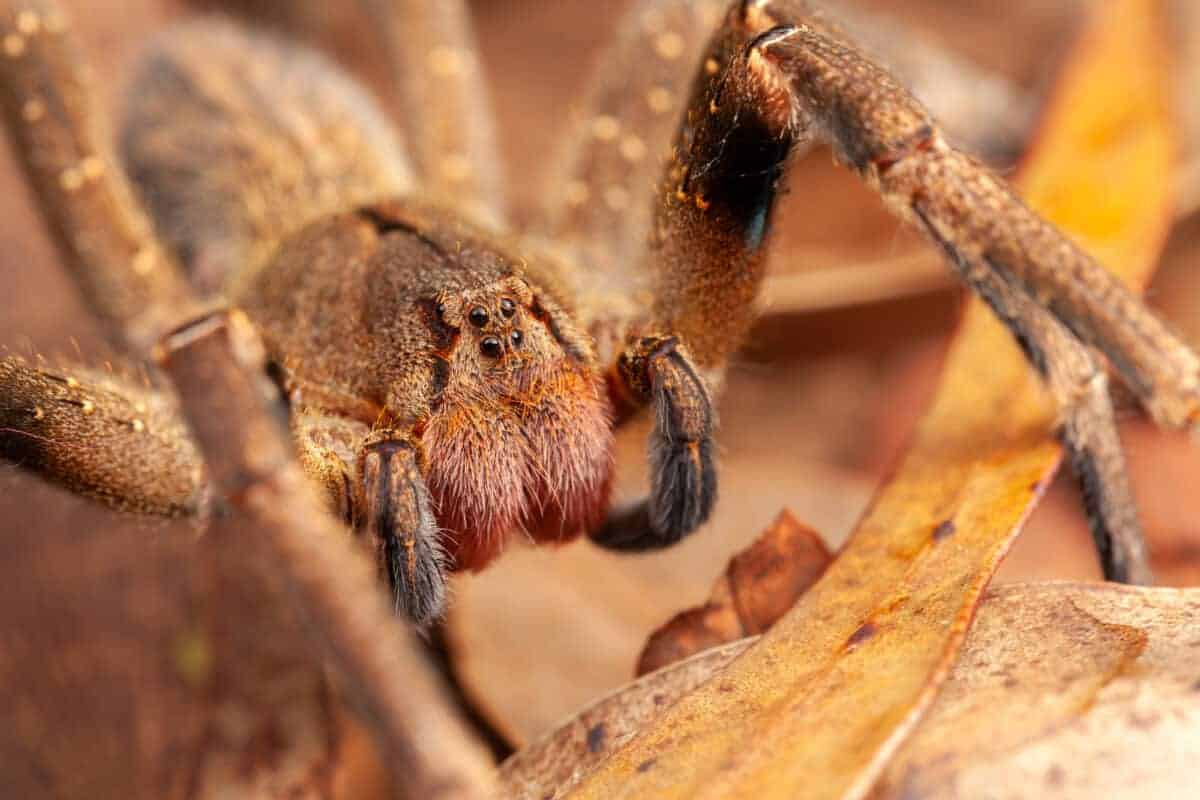
Due to its potent venom , the Brazilian Wandering Spider, also called the Armed Spider or Banana Spider , is widely acknowledged as one of the world’s most dangerous spiders. This spider can be found in several South American countries and is known for wandering into areas inhabited by humans. It can climb walls and hide in clothes, shoes, and beds.
In addition, the toxin can cause long-lasting painful erections if not treated promptly, which makes it especially dangerous to male victims. The spider’s venom is incredibly powerful, and even one bite can be fatal to a human within a few hours.
In the event of encountering a Brazilian Wandering Spider in its natural habitat or within your residence, it is advisable to seek assistance from a trained expert at the earliest convenience.
Symptoms Of A Brazilian Wandering Spider Bite
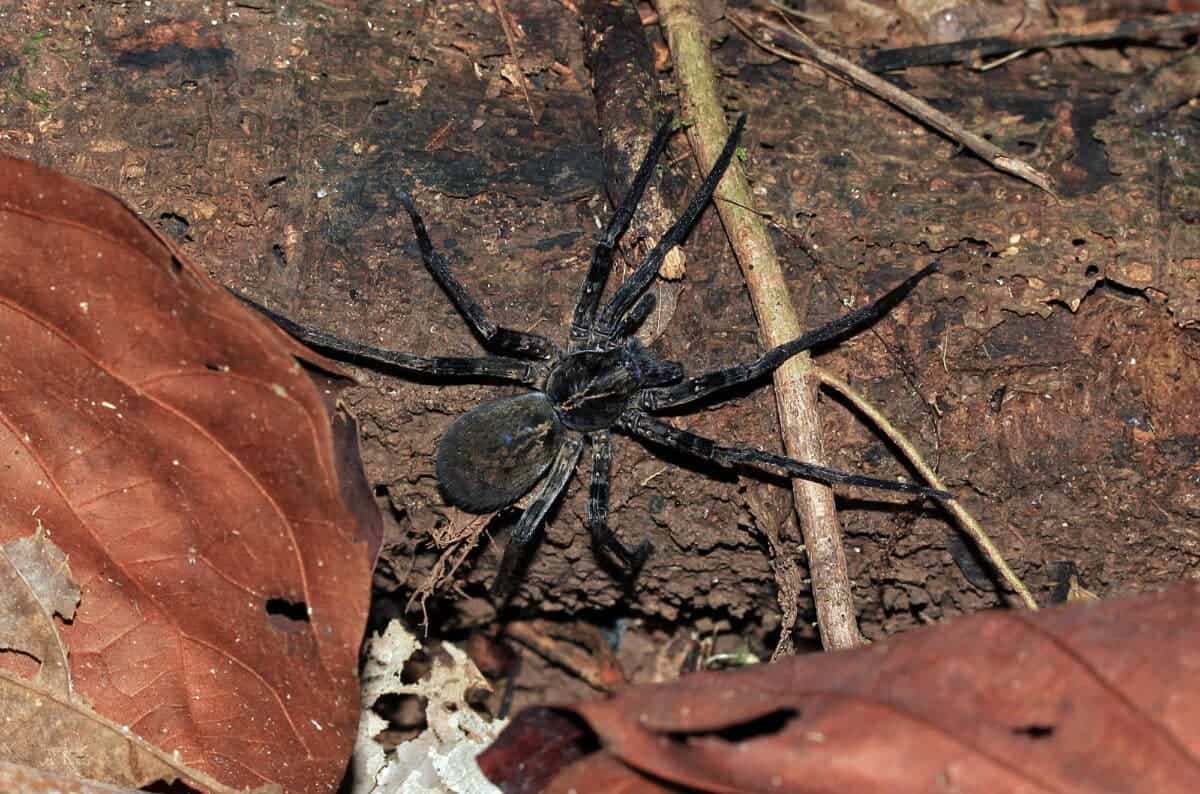
Symptoms caused by the venom of the Brazilian Wandering Spider can vary from mild to severe and may depend on factors such as the spider’s size , the amount of venom injected, and the victim’s age and health.
Below are some common symptoms of a Brazilian Wandering Spider bite:
- Pain At The Bite Site
Being bitten by a Brazilian Wandering Spider may result in discomfort and a sensation of burning or stinging in the area of the bite. The pain can spread to other body parts, accompanied by swelling and redness.
- Neurological Symptoms
A Brazilian Wandering Spider’s venom comprises a neurotoxin capable of influencing the nervous system and brain. Victims may experience muscle weakness, tremors, convulsions, and difficulty speaking or breathing.
In critical situations, the venom can induce paralysis, which may result in respiratory failure and fatality.
- Sexual Dysfunction
The venom of a Brazilian Wandering Spider can cause priapism, a prolonged and painful erection in males.
If left untreated, priapism can cause irreversible damage to the penis and may persist for several hours. Female victims may experience swelling and inflammation in the genital area.
- Gastrointestinal Symptoms
Brazilian Wandering Spider bites can cause nausea, vomiting, and diarrhea.
Victims may experience abdominal pain and cramping.
- Cardiovascular Symptoms
In addition to neurological symptoms, the venom of a Brazilian Wandering Spider can affect the heart and cardiovascular system. Victims may experience an irregular heartbeat, high blood pressure, and chest pain.
Prompt medical attention is crucial and should be sought without delay if you suspect a Brazilian Wandering Spider has bitten you, as the venom can be deadly. Treatment may include antivenom, pain medication, and oxygen therapy.
Prompt Remedies For A Bite By A Brazilian Wandering Spider
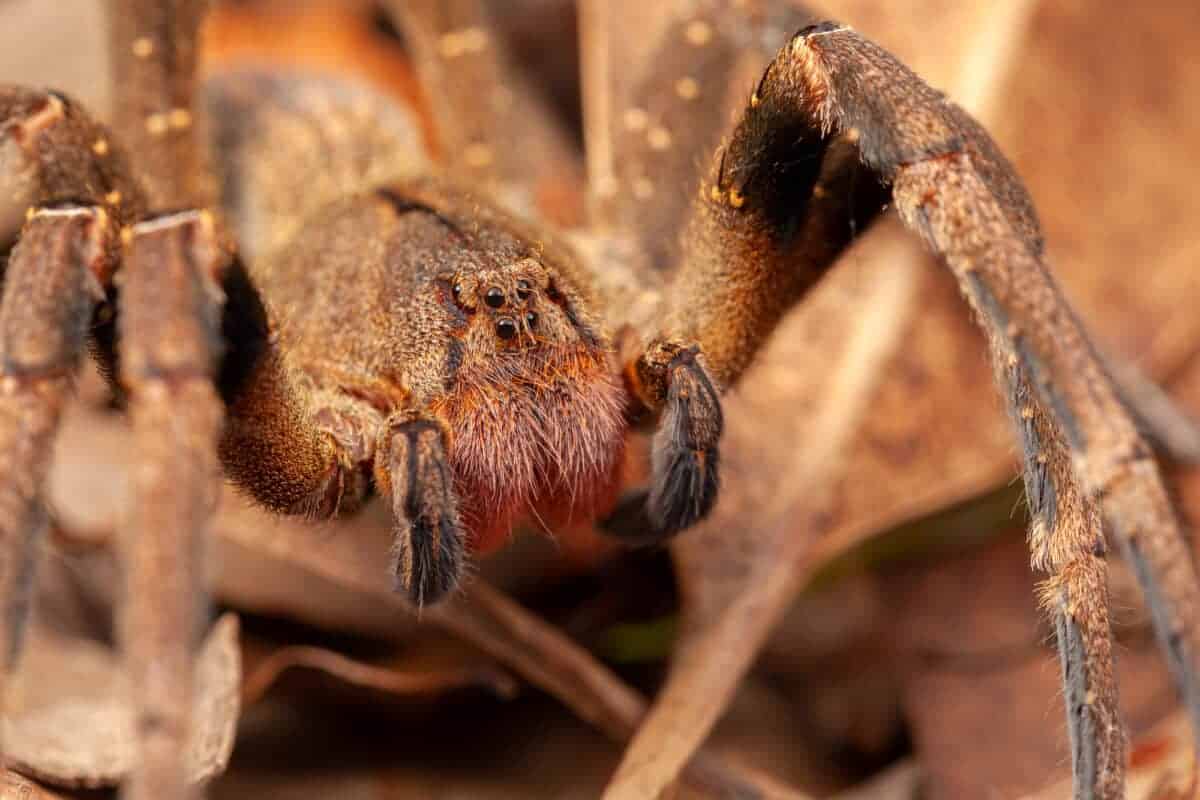
The Brazilian Wandering Spider is one of the deadliest spiders in the world, and its venom can cause severe muscle paralysis and respiratory failure, ultimately leading to death. It is vital to promptly seek medical assistance if a Brazilian Wandering Spider has bitten you.
Before seeking medical assistance, there are some measures you can take to alleviate the venom’s impact.
Keeping calm and avoiding panicking if a Brazilian Wandering Spider has bitten you is vital. Panicking can cause an increased heart rate, which can then spread toxins throughout your body at a faster pace.
Elevate The Affected Area & Apply Cold Compress
Elevating the affected area above the level of your heart can help slow down the spread of venom in your bloodstream. Administering a cold compress to the site of the bite can also aid in relieving pain and diminishing inflammation.
Clean The Bite Wound Immediately
Use sterile saline or clean water to clean the bite wound immediately and thoroughly. It will help to remove any venom residue from the wound and lower the risk of infection.
Avoid applying suction to the bite wound, as this can worsen the venom’s spread within your body.
Without Any Delay, Obtain Medical Attention
Promptly seeking medical attention is critical. A neurotoxin present in the venom of the Brazilian Wandering Spider can cause muscle paralysis, which may result in respiratory failure and fatality after being bitten by a wandering Brazilian spider.
The sole effective treatment for this type of spider bite is antivenom therapy. Seek medical assistance immediately if you experience dizziness, shortness of breath, difficulty swallowing, or muscle paralysis.
The Brazilian Wandering Spider’s venom is lethal, and the best course of action if you encounter this spider is to leave it alone and seek professional help immediately.
Follow the immediate treatment recommendations listed above to help mitigate the effects of venom, but always seek medical care as soon as possible.
Check out The world’s most dangerous spiders .
Long-Term Effects Of A Brazilian Wandering Spider Bite
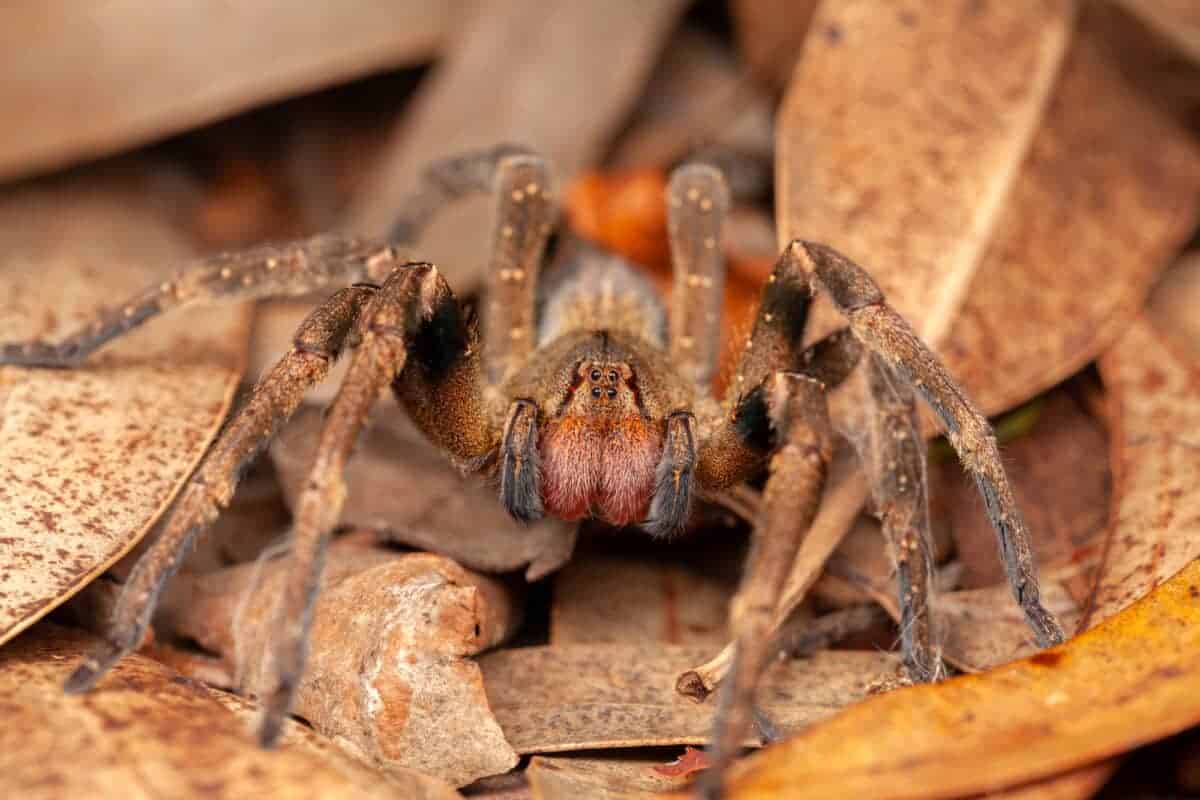
The Brazilian Wandering Spider, also recognized as the Banana Spider, is among the most venomous spiders globally. The gravity of the envenomation can have considerable, long-lasting implications on an individual’s health. Typical indications of a wandering spider bite include intense pain, swelling, sweating, and muscle spasms.
However, the venom can also affect the respiratory and cardiovascular systems, leading to difficulty breathing, high blood pressure, and even heart failure. In rare cases, neurological disorders such as paralysis may also occur.
Due to these potentially life-threatening long-term effects, it is crucial to seek immediate medical attention if you suspect a wandering spider has bitten you.
Prevention Tips To Avoid Encountering A Brazilian Wandering Spider
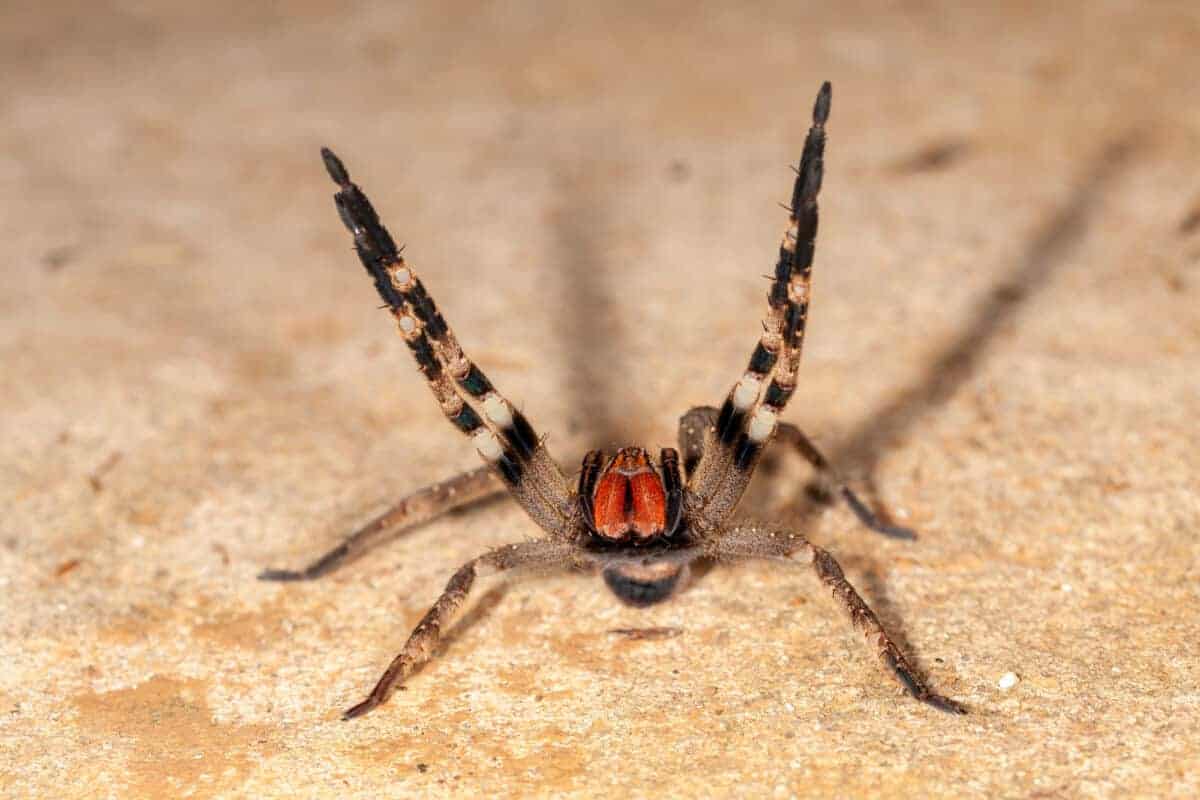
The Brazilian Wandering Spider , also known as the banana spider, is one of the deadliest spiders in the world. These spiders are typically found in South and Central America and are known for their venomous bite. It’s important to take preventative measures.
To avoid encountering this dangerous spider, be cautious when unpacking boxes or clothes that have been stored for a long time, as these are common hiding spots for spiders.
Additionally, it’s important to regularly clean and dust your home, as clutter can attract these spiders. Lastly, shake any clothes or shoes before wearing them, especially if left on the ground.
Following these simple tips can greatly reduce the risk of encountering a Brazilian Wandering Spider and protect yourself from its harmful bite.
Pest Control Solutions In The Event Of An Infestation
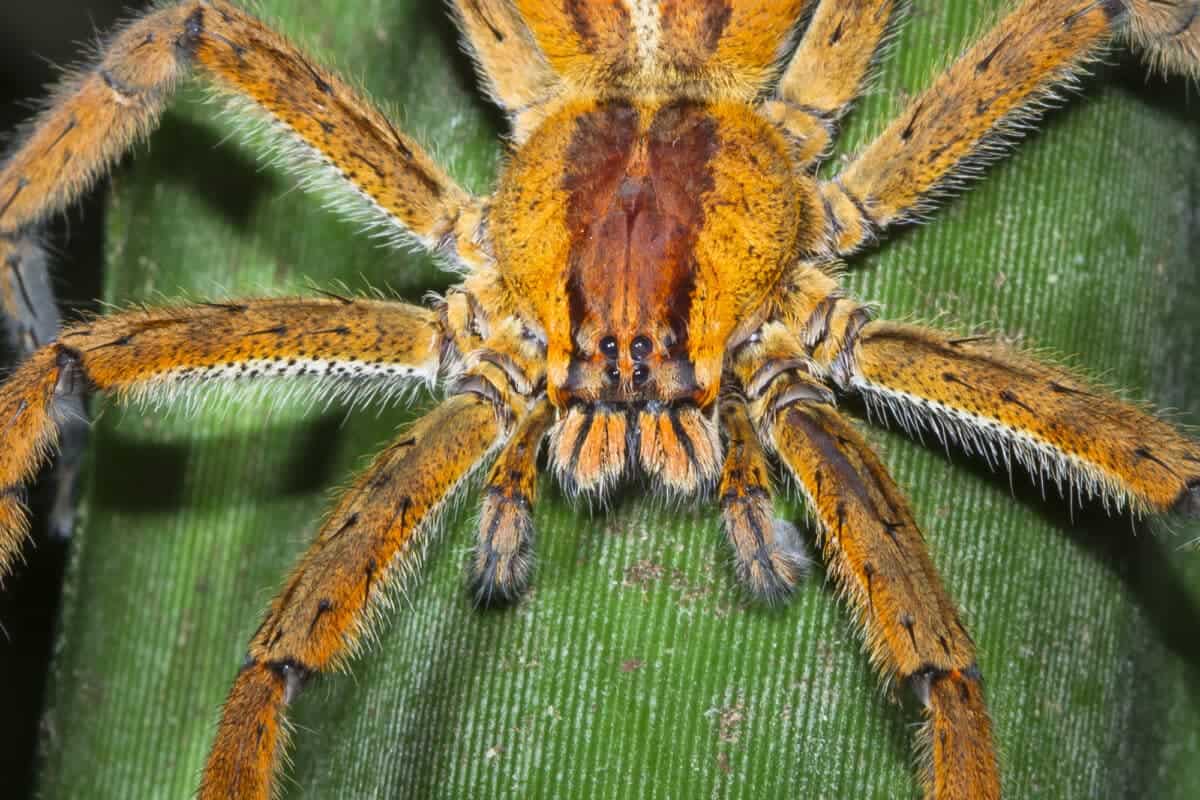
Dealing with a pest infestation is no easy task, especially when it comes to a spider known for its deadly venom – the Brazilian wandering spider.
These spiders are found in Central and South America and can cause serious harm if they bite. If you suspect an infestation, it is essential to seek professional pest control solutions immediately.
Experienced pest control specialists can detect the infestation source and administer safe and effective treatment methods for you and your family. It is crucial to take this hazard seriously and avoid handling it alone. Protect yourself and your loved ones by entrusting the task to experts.
Check out Brazilian Wandering Spider Control: How To Get Rid of Brazilian Wandering Spiders .
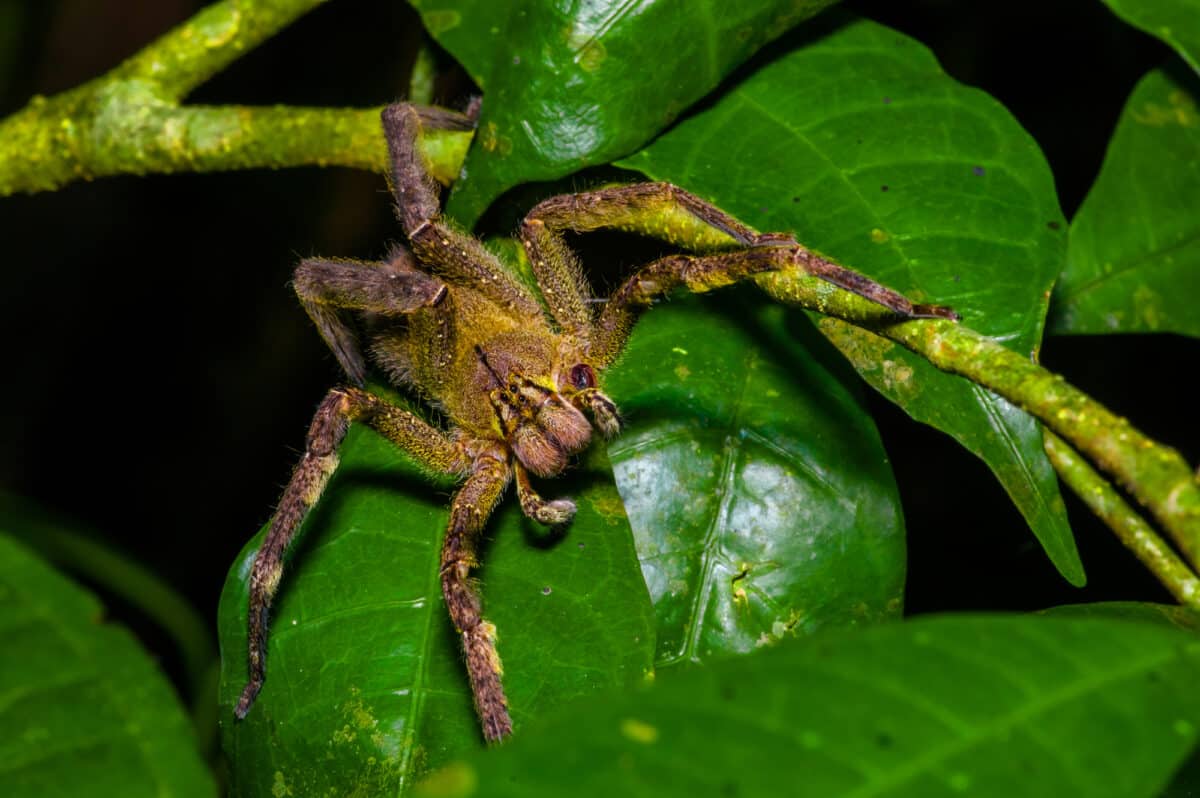
Wrapping Up with Brazilian Wandering Spider Bite

In conclusion, the Brazilian wandering spider is a real danger to be aware of when you are out and about, whether in your own country or traveling abroad. Even though its bite can be deadly, with prompt and appropriate medical treatment, most bites rarely result in lasting harm. To prevent these bites from occurring in the first place, it helps to educate yourself on what they look like and how to identify them.
We can all stay safe outdoors by learning more about this species and taking necessary precautions to visit safely. If ever bitten by one of these arachnids, seek medical help right away and inform your healthcare provider so they can provide a proper antidote or treatment.
Keeping informed and aware of what lurks around us is better than being fooled by their innocent appearance!
Thanks for following along with me! I hope you enjoyed reading about these two entertaining animals . Next is Understanding The Inland Taipan Bite , Venomous Deathstalker Scorpion Sting , and Surviving A Gaboon Viper Bite .
- Latest Posts
- Bald Eagle Family Expand Their Nest In California - April 24, 2024
- Firefighter Saves Abandoned Kittens Found Cuddling In Hoses - April 24, 2024
- Dolphins Get High Playing Catch With A Pufferfish - April 24, 2024
Spider-Man: 5 Weird Effects of Real Spider Bites
Although Spider-Man got his superhero abilities from a spider bite, ordinary spider-bite victims may have to deal with spider-bite effects that have nothing to do with being able to scale walls and climb around on ceilings.
Some of the weirdest effects that spider venom may have on regular, nonsuperhero humans include unwanted erections, dead skin tissue that turns black, unusual rashes, dark pee and sweat so heavy it makes puddles on the floor.
However, it is important to remember that such unusual symptoms are extremely rare, and the vast majority of spider bites are harmless, or cause only mild irritation and itchiness. [ In Photos: The Science of the Amazing Spider-Man 2 ]
In fact, spiders do not often bite people, and if they do, it is because they feel threatened. Black widow spiders and brown recluse spiders are the only two spider species in North America whose bites may sometimes result in symptoms more serious than minor local pain and swelling, according to Rick Vetter, a retired arachnologist at the University of California, Riverside.
Although hobo spiders, which are common in the Pacific Northwest, are also listed by the Centers for Disease Control and Prevention as one of the three types of spiders that can be toxic to people, some researchers have argued that hobo-spider venom may not be so toxic after all.
Here are some of the weirdest effects spider bites have had on people.
Venomous Viagra?
The Brazilian wandering spider's venom contains a toxin whose unusual erection-inducing qualities have attracted the attention of the pharmaceutical industry. In 2007, researchers found that the bites of the Brazilian wandering spider can cause long and painful erections in human males, along with other symptoms. The effect happens because the spider's venom raises the levels of nitric oxide, which is a chemical that increases blood flow.
Researchers have since tested the toxin that is responsible for this unusual effect, called PnTx2-6, in the hope of developing a potential new drug for erectile dysfunction .
The Brazilian wandering spider is large, with a body size reaching up to 2 inches (5 centimeters) and leg spans stretching 5 or 6 inches (13 to 15 cm). Although the creepy crawler's size may make it look threatening, it is not aggressive and, like most spiders, will only attack when it feels threatened, experts say.
Dead tissue
Although there have been cases of "necrotic arachnidism," in which spider venom kills human tissue, such cases are extremely rare. In fact, researchers estimate that less than one case of dead human tissue is reported per 5,000 spider bites from verified spider specimens, and verification of spider bites is very rare, Dr. Scott Weinstein, a toxinologist at Women's and Children's Hospital in North Adelaide, South Australia, told Live Science. (Toxinology is the study of the venoms and poisons of plants, animals and microbes; it is different from toxicology, which is the study of chemicals and drugs as they affect the body.)
If a spider bite is "verified," it means that there was actual evidence that a person was bitten by a particular kind of spider. The only spider in North America whose bites have been shown to kill human tissue in rare instances is the brown recluse spider, Vetter said.
When necrosis does occur, tissue may sometimes turn black as cells die. One such case was reported last year — a woman on vacation in Italy developed necrosis in her ear after being bitten by a brown recluse spider. Part of her ear turned black, and her doctor had to remove the dead tissue and restore it, using cartilage from the woman's ribs.
Some people develop unpredictable skin reactions to spider bites . A 66-year-old patient in France developed a strange rash after being bitten by a spider, which the doctors suspected was likely a brown recluse spider, according to a report of his case. The man had pinhead-size bumps on his forearms, which later spread to other parts of his body.
The medical staff diagnosed the man with a condition called acute generalized exanthematous pustulosis (AGEP), which typically occurs in people taking antibiotics. Other reports have also linked AGEP to brown recluse spider bites, the researchers said. The man recovered in five days, after doctors treated him with oral corticosteroids.
Unusual blood disorders and dark pee
In the case of the man in France who developed the strange rash, the doctors also found that he had a blood disease called periarteritis nodosa (PAN), in which small arteries become swollen and damaged. The doctors linked his blood condition with the brown recluse bite, because previous reports had described conditions similar to PAN in animals injected with brown recluse spider venom.
In fact, blood disorders are some of the rare symptoms that occur in people who have been bitten by recluse spiders, Vetter wrote in one study. The brown recluse venom may cause red blood cells to burst and release their contents into plasma, in a process called hemolysis. As a result, anemia may develop and can last from four to seven days, he said.
These blood problems may lead to other symptoms, such as acute kidney injury and jaundice (yellowing of the skin), as the blood protein called hemoglobin breaks down. The waste products of the breakdown can build up in the blood, and turn the urine dark when they are then excreted.
Puddles of sweat
Some Australian widow spider bite victims have been found to sweat so much after getting bitten that their sweat formed puddles on the floor, Vetter reported in one study.
Excessive sweating is one of the symptoms that may result from the bites of certain spiders that affect the nervous system. The venom of the black widow, for instance, attacks nerves by blocking their signals to the muscles. This causes the muscles to contract repeatedly, which can be painful and stressful for the body.
Black widow spider bite victims may also experience other nerve-related symptoms, such as high blood pressure, restlessness and severe facial spasms.
Who gets these spider-bite symptoms?
Whether a spider bite affects a person only mildly or causes severe symptoms depends on a number of factors, such as the amount of the venom injected, and the size and age of the person who got bitten. Children and elderly people are particularly susceptible to extreme symptoms from toxic spider bites.
However, most people who get bitten are highly unlikely to experience these severe symptoms, researchers say.
Follow Agata Blaszczak-Boxe on . Follow Live Science , & . Original article on Live Science .
- Types of Spiders | Spider Facts
- Gallery: Spooky Spiders
- Creepy, Crawly & Incredible: Photos of Spiders
Crikey! 'Unluckiest Man in Australia' Gets 2 Penis Spider Bites in a Year
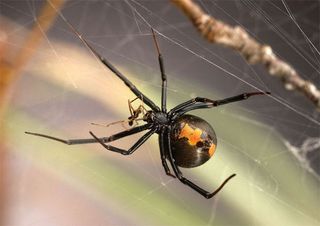
An unlucky Australian tradesman wound up in the hospital this week for a spider bite on his penis — and it's the second time it's happened to him this year.
The 21-year-old was using a portable toilet on a Sydney building site Tuesday (Sept. 27), when he "felt the sting" that he was familiar with because of the previous incident, the BBC reported . In April, the man, Jordan (he did not reveal his last name), was treated for a redback spider bite, which was also on his penis and also occurred during a visit to a work site's portable toilet.
"After the first time it happened, I didn't really want to use one again," he told the BBC . But the "toilets got cleaned that day, and I thought it was my opportunity to go use one. Had a look under both seats, and then I sat down, did my business. Next thing you know, I'm bent over in pain."
Jordan was unsure of what species of spider bit him this time around, but redback spiders are venomous, and their bites can cause severe pain, sweating and nausea. Closely related to the black widow spider , redbacks are distinguished by their namesake trait: a long, red stripe on the abdomen.
Redbacks are relatively common in Australia, and about 2,000 people are bitten by these spiders each year, according to the Australian Museum. But to be bitten twice, on the penis, in less than six months, makes Jordan "the most unlucky guy in the country," he said. [ 5 Weird Effects of Real Spider Bites ]
According to news reports, Jordan was treated for the bite and released in good health. However, spider bites have resulted in some bizarre side effects over the years.
In fact, one spider's venom contains a toxin that can induce erections . The Brazilian wandering spider's venom attracted the attention of the pharmaceutical industry for this effect. Another curious case of a spider bite resulted in necrosis, or tissue death, in a woman's ear after she was bitten by a brown recluse spider on vacation in Italy. Her doctor had to remove the tissue the venom killed and restore her ear with cartilage from her rib.
Sign up for the Live Science daily newsletter now
Get the world’s most fascinating discoveries delivered straight to your inbox.
Most spider bites result in nothing more than a red spot and some itching or swelling, and require only minimal treatment. But experts recommend safely recovering the spider or attempting to identify it in case medical attention is necessary.
Original article on Live Science.

Can humans see ultraviolet light?
PTSD tied to 95 'risk hotspots' in the genome
How common chemicals — including those in bed sheets — can boost eczema risk
Most Popular
- 2 James Webb telescope confirms there is something seriously wrong with our understanding of the universe
- 3 Giant, 82-foot lizard fish discovered on UK beach could be largest marine reptile ever found
- 4 Scientists discover once-in-a-billion-year event — 2 lifeforms merging to create a new cell part
- 5 George Washington's stash of centuries-old cherries found hidden under Mount Vernon floor
- 2 Why does striking flint against steel start a fire?
- 3 Tweak to Schrödinger's cat equation could unite Einstein's relativity and quantum mechanics, study hints
- 4 32 times lasers revealed hidden forts and settlements from centuries ago
- 5 New UTI vaccine wards off infection for years, early studies suggest

IMAGES
VIDEO
COMMENTS
A bite from a Brazilian wandering spider (Phoneutria nigriventer) can cause an erection that lasts up to four hours. On Aug. 14, 2023, the account First Doctor posted what it asserted to be an ...
About 4,000 bites reportedly happen each year in Brazil, but only 0.5% of those cases are severe, according to a 2018 study in the journal Clinical Toxinology in Australia, Europe, and Americas ...
Phoneutria nigriventer is a species of medically significant spider in the family Ctenidae, found in the Southern Cone of South America (Brazil, Uruguay, Paraguay, and Argentina). Along with other members of the genus, they are often referred to as Brazilian wandering spiders.. Its bite can cause severe symptoms, including increased pulse, blood pressure, and respiratory rate; extraordinary ...
In addition to intense pain and possible medical complications, the bite of a Brazilian wandering spider can deliver a long, painful erection to human males because the venom boosts nitric oxide ...
A Brazilian Wandering Spider bite on a man can cause a range of symptoms, some severe: Pain: The bite is known for causing intense, localized pain at the site. Autonomic effects: Sweating, nausea, and increased heart rate are common.
Envenomation and Its Effects. When a Brazilian wandering spider bites, it injects venom that can lead to various symptoms such as: Pain that radiates from the bite. Muscle cramps. Increased sweating. Although bites are rarely fatal, serious complications can arise when left untreated, potentially leading to death.
The Brazilian wandering spider is a highly venomous and aggressive spider. Also known as the 'banana' spider (because these spiders are frequently found in shipments of bananas), the Brazilian wandering spider 'wanders' the jungle floor as opposed to living in a lair or building a web. ... The bite of a Brazilian wandering spider may ...
Discover the threats of the Brazilian Wandering Spider, a venomous creature causing excruciating pain and prolonged erections. Explore its habitat, physical characteristics, hunting techniques, and diet. Learn about the potency of its venom, signs of bites, health risks, and potential complications. Find out the treatments available, including antivenom administration and management of pain ...
The Brazilian Wandering spiders life cycle is 1 - 2 years. Brazilian Wandering Spider Venom. Bites from the Brazilian Wandering spider may result in only a couple of painful pinpricks to full-blown envenomed. In either case, people bitten by this spider or any Ctenid should seek immediate emergency treatment as the venom is possibly life ...
Possessing one of the most potent venoms among spiders, the Brazilian Wandering Spider's bite is a cause for concern. Its venom is a complex cocktail of toxins, proteins, and peptides. The main component that gets everyone's attention is the neurotoxin, called PhTx3 , which can interfere with the functioning of our nervous system, leading ...
Like the Brazilian wandering spider, the venom of A. robustus can be neutralized by anti-venoms but some cases still lead to deaths when these arachnids bite a human, who did not receive any ...
Phoneutria is a genus of spiders in the family Ctenidae.They are mainly found in northern South America, with one species in Central America. Members of the genus are commonly referred to as Brazilian wandering spiders. Other English names include armed spiders (armadeiras in Brazilian Portuguese) and banana spiders (a name shared with several others).
Clean the bite site with soap and water. Put a wet, cold cloth, or an ice pack on the bite site. Seek urgent medical attention, and bring the spider with you to help with identification, when possible. First aid administration: The First Aid for Brazilian Wandering Spider Bites includes cleaning the bite area and seeking medical attention.
Yes, a bite from a Brazilian Wandering Spider, or Phoneutria fera, can be quite painful. It can lead to immediate intense pain and discomfort. Furthermore, if not treated promptly, the spider's venom can cause more severe symptoms, including sweating, high blood pressure, and even heart problems.
The venom glands of the Brazilian Wandering Spider are over a centimetre long, and this is all housed inside the bright red chelicerae (mouth parts) which they are quick to display whenever they get upset. 1. 4. They're aggressive. These spiders can grow quite large and have long, brightly-coloured legs.
It's crucial to note that a Brazilian wandering spider bite can be life-threatening, especially if left untreated. Antivenom is available, and timely administration is vital to counteract the effects of the venom. Recovery. Thanks to prompt medical intervention, I was able to recover from the Brazilian wandering spider bite.
The Brazilian wandering spider, scientifically known as Phoneutria, Maximilian Perty kickstarted the Phoneutria genus in 1833. The name comes from the Greek word φονεύτρια, which means "murderess" and falls under the Animalia kingdom, Arthropoda phylum, and Arachnida class. Within Arachnida, it is classified in the order Araneae ...
The Brazilian Wandering Spider is found in the rainforests of South America. These rainforests are the world's largest and most biodiverse terrestrial ecosystems, covering an area of approximately 6.7 million square kilometers. The spider is striking, with a shiny brown or black body covered in short fine hairs.
Brazilian Wandering Spider (Phoneutria Boliviensis, aka Banana Spider), Drake Bay, Costa Rica. Symptoms caused by the venom of the Brazilian Wandering Spider can vary from mild to severe and may depend on factors such as the spider's size, the amount of venom injected, and the victim's age and health.. Below are some common symptoms of a Brazilian Wandering Spider bite:
Spider-Man: 5 Weird Effects of Real Spider Bites. ... The Brazilian wandering spider's venom contains a toxin whose unusual erection-inducing qualities have attracted the attention of the ...
In fact, one spider's venom contains a toxin that can induce erections. The Brazilian wandering spider's venom attracted the attention of the pharmaceutical industry for this effect.
Putting a Phoneutria outside after taking some pictures of it on a white background, it was found inside a cat transport box, had to show it's calm behavior ...